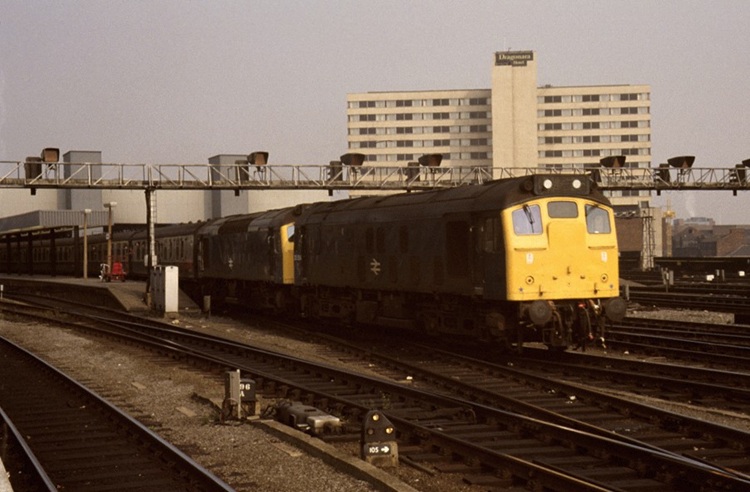
Holbeck's allocation of Classes 24 & 25 mostly went about their duties with little recognition, just part of the day to day scene in the Leeds area. However on two routes they were used on passenger workings on a consistent basis for many years. These routes were the Leeds - Bradford & Leeds - Morecambe lines, both lines were very familiar to the Class 25's, whilst the Bradford route probably had a greater association with the Class 24's. This page takes a look at the Skipton & Morecambe line, some of its features and of course the locomotives that worked them.
North West from Leeds to Morecambe
The multitude of lines radiating from Leeds allowed for the crews from Holbeck to gain route knowledge over many lines. This included perhaps one of the most famous lines in all of England, the former Midland Railway route that runs between Leeds and Carlisle, literally over the top of England. But this page is not about all of that route, sure we'll get you to Skipton, but this page with a bit of luck will take you on to Morecambe instead!
The splendour of the route is certainly not apparent as one waits at Leeds City for a service to Carlisle. The built up urban area that was a powerhouse of Victorian industry lingers for many miles on either side of the line. The route stays close to the River Aire and it is not until the train has passed beyond Keighley before the Yorkshire scenery so familiar with the Settle & Carlisle starts to unfold.
For the purposes of this text the 'Up line' refers to trains heading towards London, the 'Down line' services are heading northwards to Skipton.
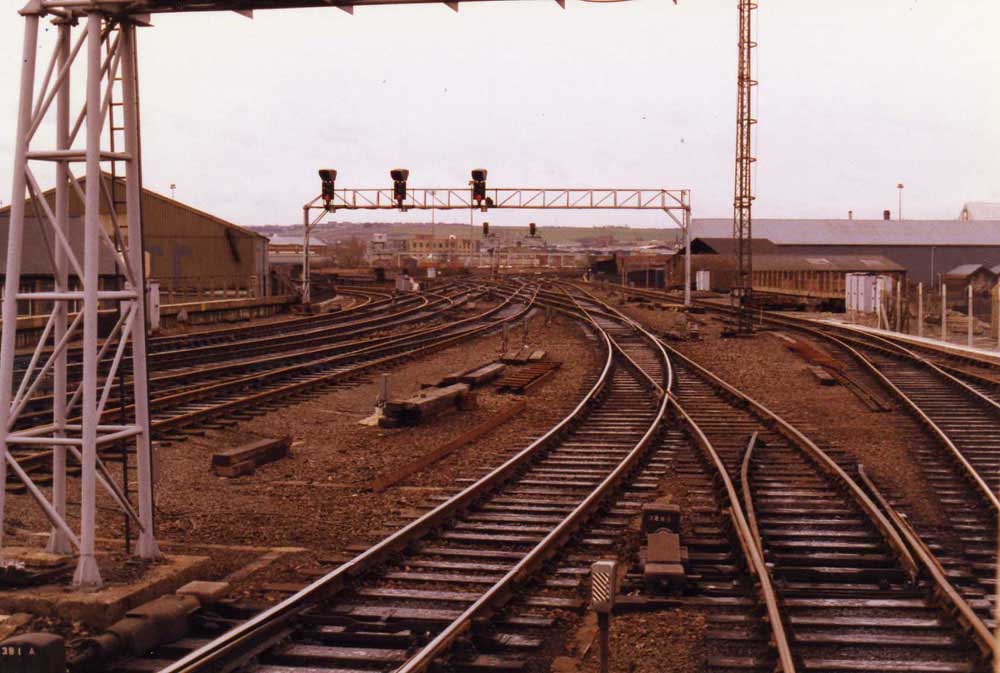
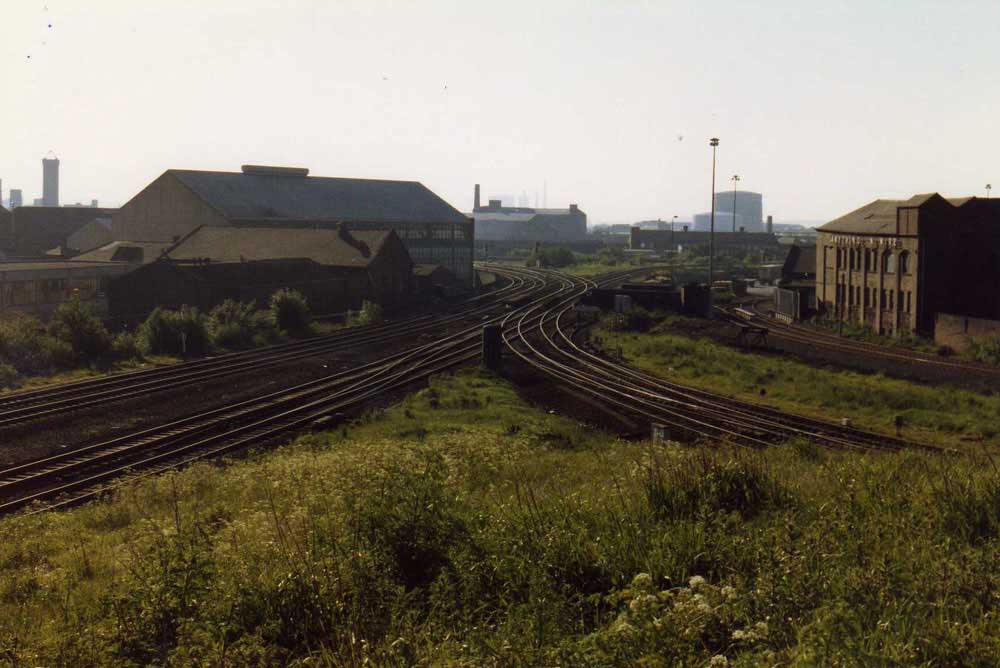
Once clear of the maze of tracks in the central Leeds area the former Midland Railway route struck out in a generally northwesterly direction, initially comprised of four tracks. The views below feature the early part of this route, a mixture of modern and not quite so modern views. The route closely followed the River Aire requiring numerous crossings of the river, at the one point when the railway did not follow the river it resulted in the boring of 1,496 yard Thackley Tunnel!
The four tracks originally ran all the way from Leeds - Guiseley Junc (Midland) and Leeds Road Junction, with several cross overs from fast to slow/ slow to fast at Wortley Junction, Armley Station/Junc (where the flyover once was), Kirkstall No 1., Kirkstall Junc, Newlay Junc (Kirkstall Forge), Calverley & Rodley, Apperley Junc, Apperley Station, Apperley Viaduct, Thackley Junc, & Guiseley Junc.
It has been pointed out that locations in the Leeds area are never quite what they seem - Wortley box is at Armley, Geldard box, near Leeds Central is also at Armley, Holbeck Low Level & High Level stations were basically at Armley, no wonder everybody gets lost when they come to Leeds, or should it be called Armley!
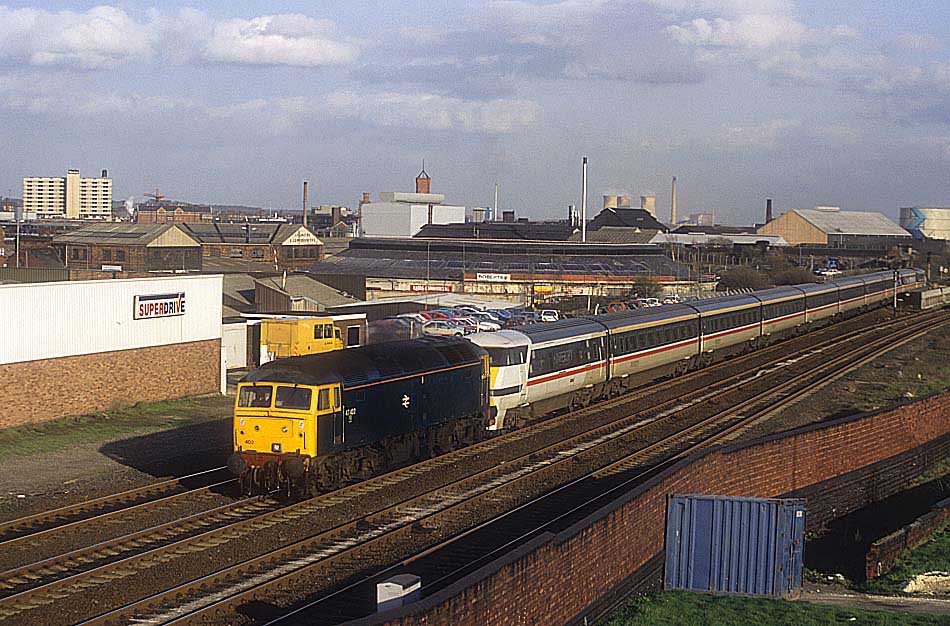
With regard to the above view showing 47402, it was not far from this location that 47402 and a diesel multiple unit were involved in a head on collision on September 5th 1977 at Farnley Junction in which two Holbeck drivers lost their lives. The Class 47 had been in charge of the westbound 1M41 21.50 York - Shrewsbury/Manchester mail whilst the diesel multiple unit was working the 1E89 20.40 Liverpool Lime Street - Hull. The threat of industrial action by CEGB workers had led to the use of a mobile generator at Leeds signal box to minimise disruption if power outages did occur. The use of the generator had caused a number of minor problems in track circuit indicators which included two track circuits at Farnley Junction. In replacing a rectifier in a nearby lineside cabinet the S & T technicians transposed the wiring connections, reversing the polarity of the current sent to the relays controlling the points at Farnley Junction. Before the wiring error was discovered the Hull bound train had reached the now wrongly aligned points and crossed over to the 'Down' line and collided head on with the still stationary westbound mail train.
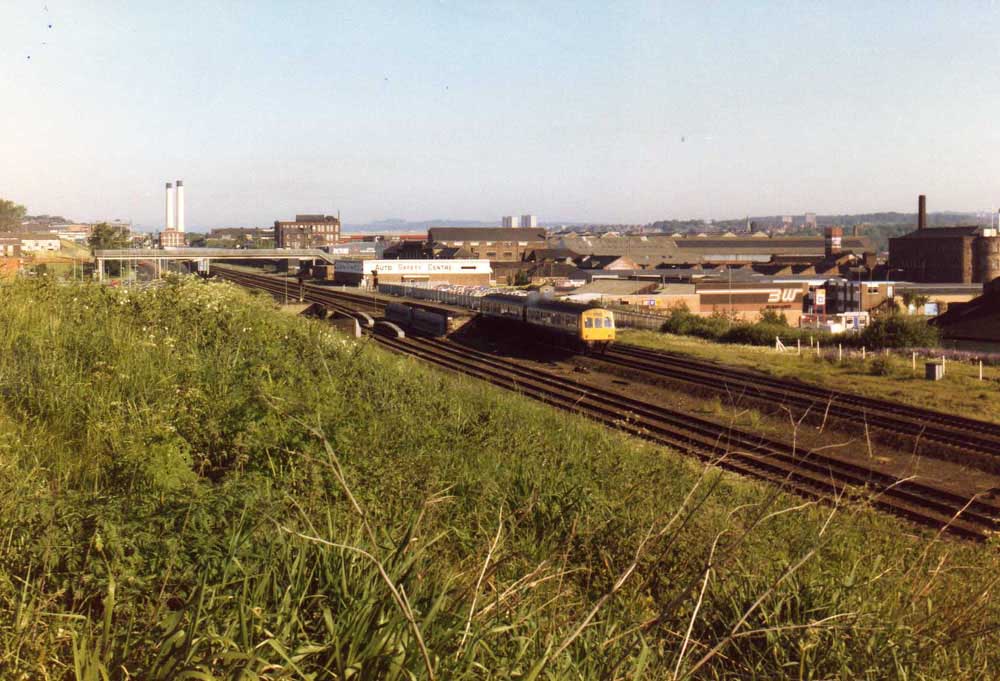
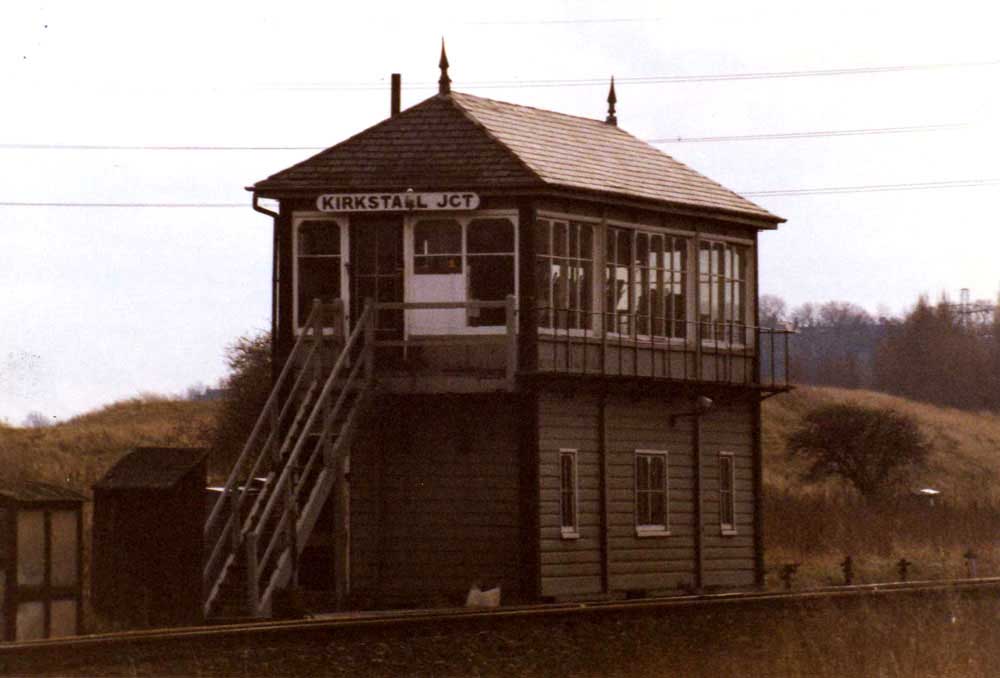
Kirkstall flyover was built when increased traffic on the Leeds - Bradford/Carlisle routes required the line to be widened. By the mid 1960's the reverse was true and the need for the flyover and its lines was greatly diminshed, both would be abandoned by 1967. However the flyover remained in situ until August 1974 when Michael was on hand to watch its demise. Michael worked his first job on August 19th 1974, using a Class 25 to take a Class 47 from Holbeck to Healey Mills, and coming back with just the Class 25. The following Sunday, August 26th 1974 he booked on at 08.00 and travelled with the 'van' to Kirkstall, actually coming through the entrance to Kirkstall Power Station to reach the site. The Holbeck steam crane was already in action taking the flyover down.
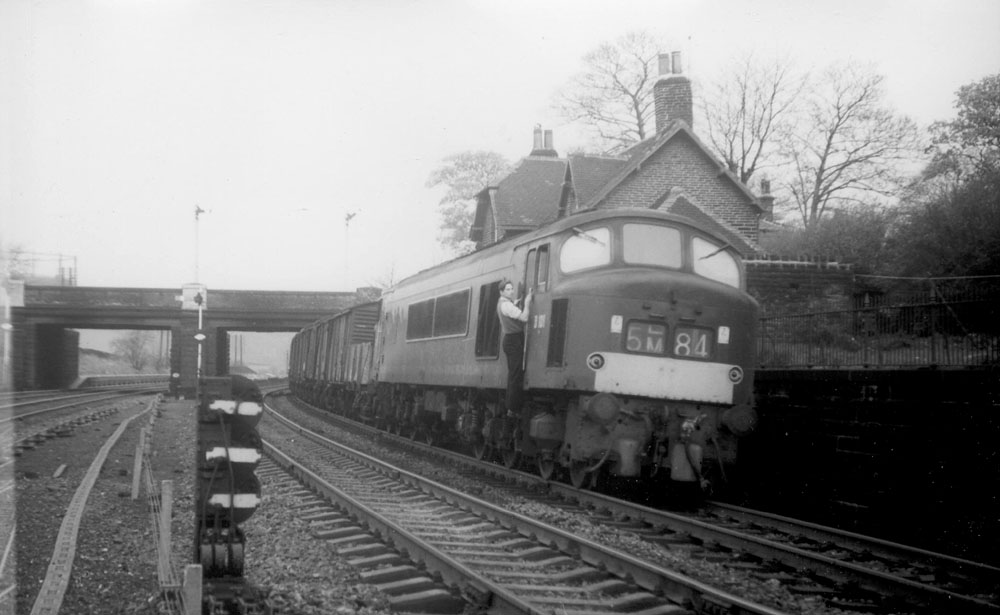
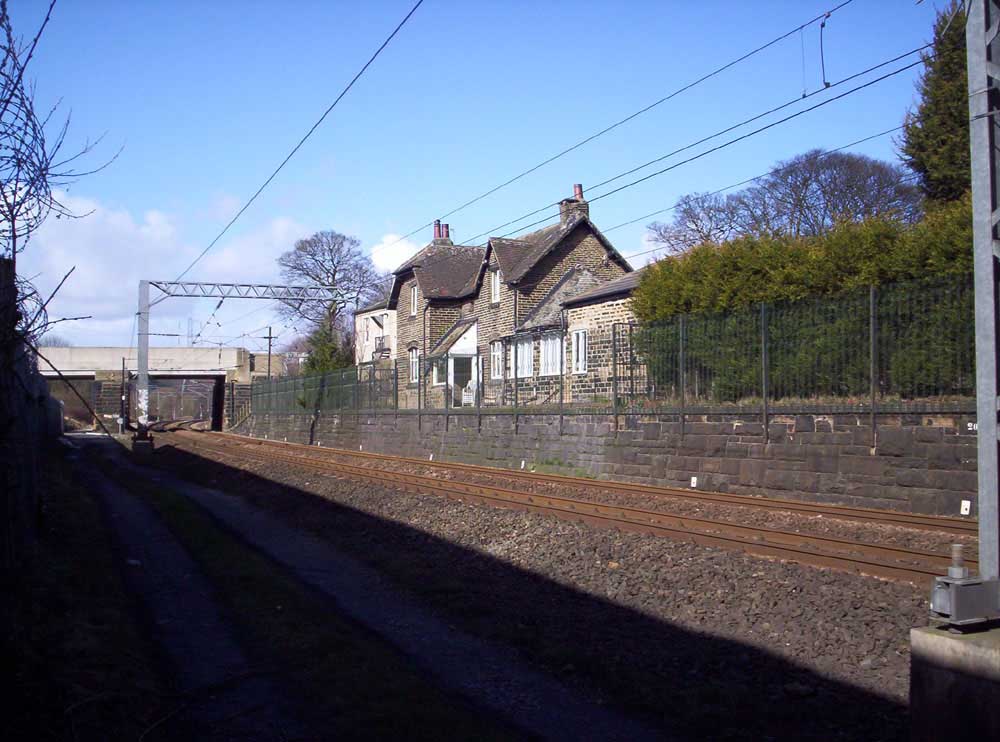
The above pictured freight forms part of the Blea Moor water delivery service detailed elsewhere on this page. It was booked to 'Collect & Deliver' the water cans at Blea Moor signal box at 11.10am and was also booked 'inside to stand', presumably to allow faster workings to pass by.
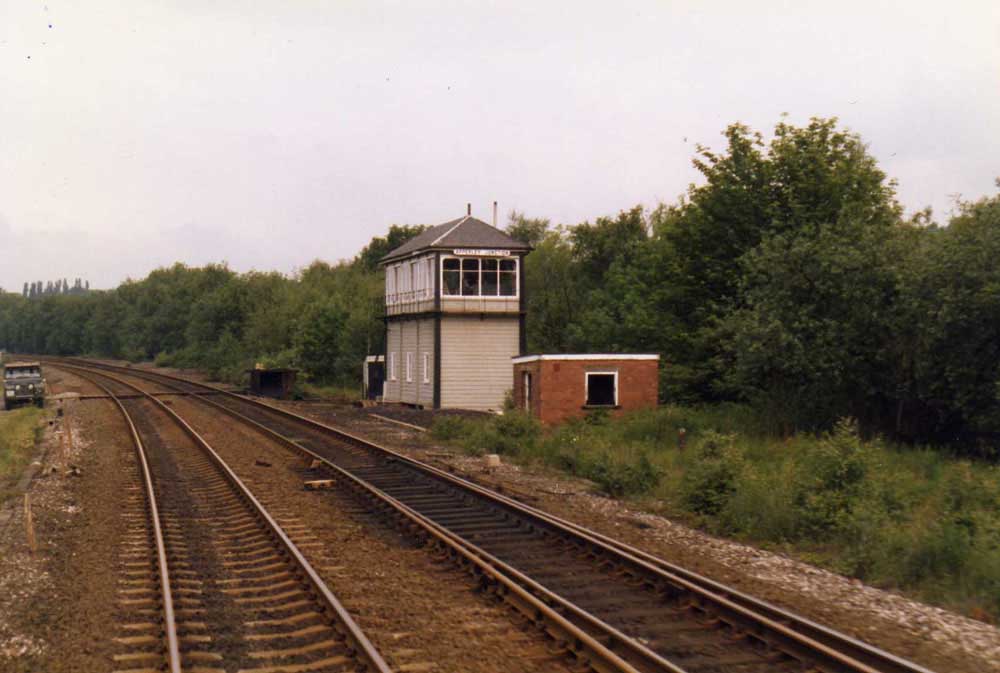
One very early morning we were working a Class 31 and tank train to Skipton and was passing through the cutting at Newlay on the approach to Apperley Junction. Out of the gloom came an unexpected red light, jumping up quickly, with heart in mouth and some sort of underwear problem - my driver asked 'where was I going, it's the captain first!' Scrambling to escape from the locomotive and expecting to hear a bang at any moment we ran past the red light without incident. Turns out the light was the tail light from the push bike being used by the signalman to reach Apperley Junction. My driver had some choice words for his mate as we passed the box!
When we worked in tunnels we got an extra 60p on top of our shift allowance. One night when booking on we were given masks to put on our faces for obvious reasons. This night we were working in the 1,496 yard Thackley Tunnel. On arrival with the trains we had to keep the locomotives running to maintain the operation of the air compressors, the rest of the time was spent with our feet up waiting for further orders. Two hours into the shift we had eight locomotives in the tunnel, some with trains, by the time we were relieved in the morning we looked like the Black & White Minstrels!
When asked if these ballast/engineering were boring, Michael said no, you'd come on a Saturday night, get the locomotive off Holbeck shed, went to the sidings and got your train, then off to the location of the engineering work. Once here you had your breakfast, if the locomotive was a Class 45/46 they had a great oven - I always brought an onion, wrapped it in tinfoil and slowly cooked it, after an hour or two it was naptime, great!
On a Sunday job it meant rising early, booking on at Holbeck and then catching the minibus/van with a crowd of us to get to the site. Once the night shift had been relieved it was time to read the newspapers, take a walk or play cards in the brake van, then tidy up the trains and return them to the sidings. On one occasion we arrived at Menston station with our train. The floodlights were blazing, we manouevred opposite the lights to allow the diggers to load the old ballast into our empty wagons. Leaning out of the cab window I was watching the diggers going about their business. One in particular went about the job very enthusiastically, so much so that a water main was struck. There was water going everywhere. Menston station was on a grade down to Ilkley, which is where all the water went! This prematurely ended the work for the day so we took the train back to the sidings and finished early. Meanwhile the residents of Menston were without water for the day, their principal water main had been broken!
When the railway hasn't been used for the weekend you just drove according to the line speed and signals, I can remember being the first train to Ilkley on a Monday morning, at that time Ilkley had no Sunday service, and the first train to Ilkley on a morning was 05.15. On making my way to Ilkley, I entered Leeds Road Tunnels near Guiseley Station doing around 40 m.p.h, I could just make out the giant icicles, within seconds of me entering the tunnel they were scraping along the roof of the unit, I hit the brakes and eventually came out with no damage to the unit. Later I spoke to one or two drivers about it and thay said that I was lucky the icicles didn't pierce the roof of the unit.
Beyond Calverley & Rodley there were a number of junctions, north to Ilkley and a little further on was the junction south to Bradford Foster Square. At Shipley the triangular layout did not initially provide a platform face for the Leeds - Skipton route.
Leeds Road Junction Box was where the four track section ended, I can remember them painting this box in November 1974, it looked fantastic in the Midland Railway colours, a month later it was pulled down and the Junction at Shipley was simplified.
Shipley
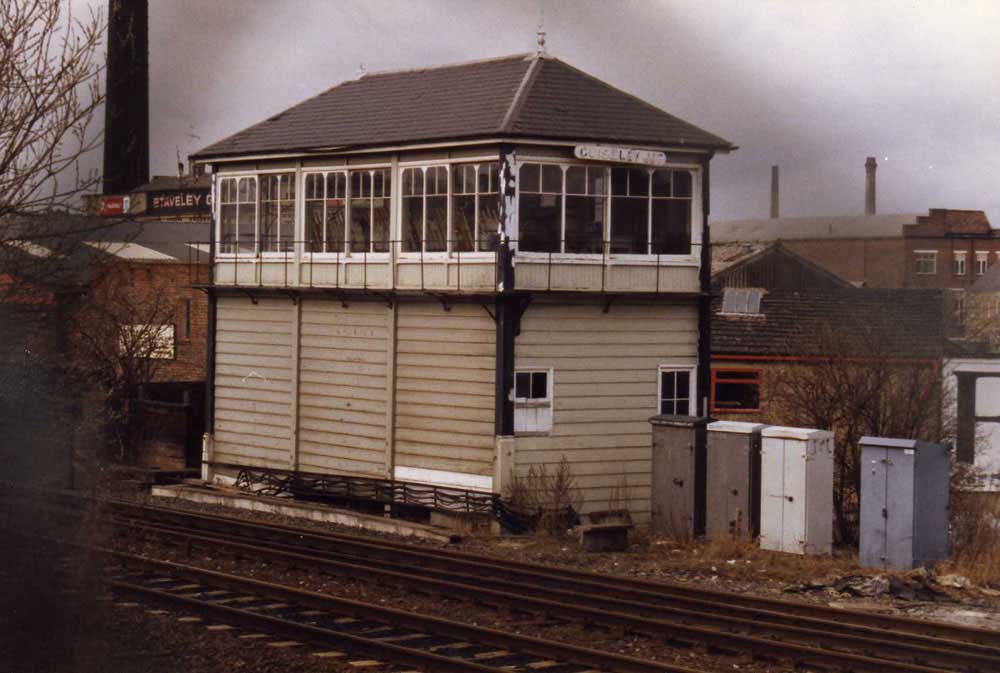
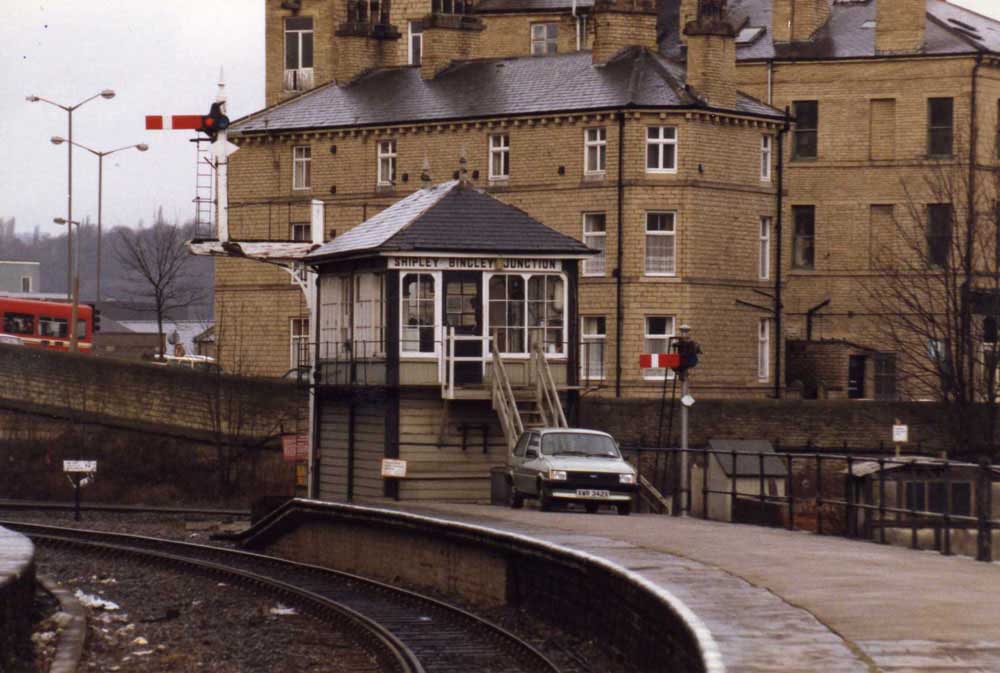
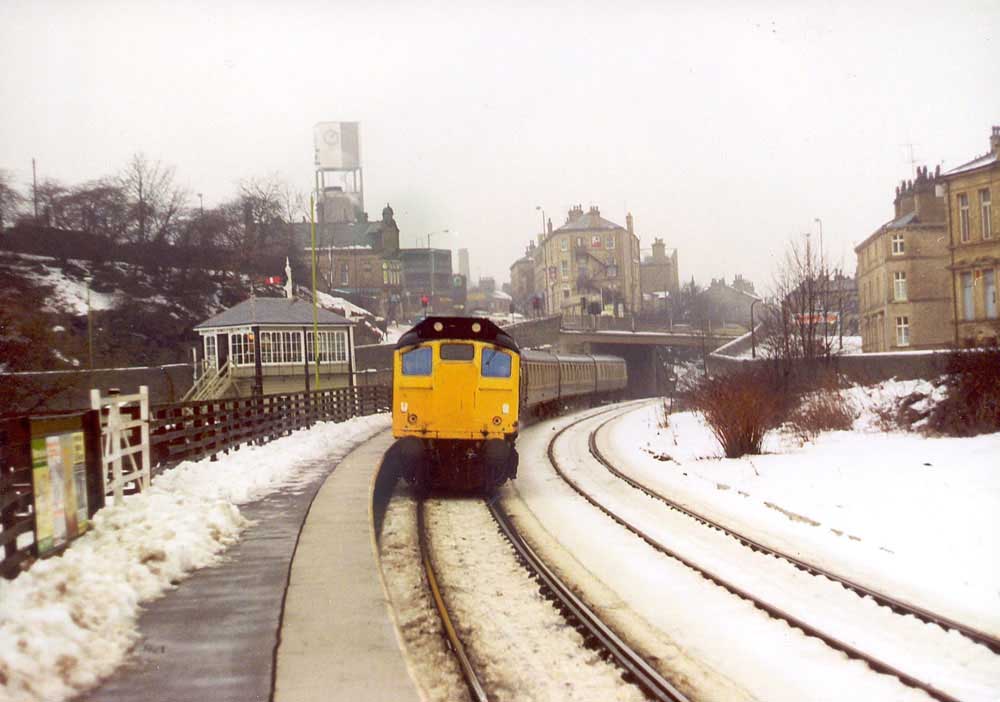
One night during 1976 we were on a ballast train stopped at Shipley Bradford Junction's home signal. I was sent up to the box to sign the signalman's register to show evidence that Section K of the Rule Book - train detained on running line - had been observed. Whilst completing the register the block bells started ringing, and ringing, and ringing! Inquiring of the signalman about the incessant ringing, he replied 'If he doesn't stop them blasted bells, I'll go round (to Shipley Bingley box) and stuff the lot up where the sun don't shine'. We both laughed, but really it wasn't funny because it was 2.00am and the railway was under total possession. When asked why the other signalman was doing this he advised that the block instruments must be tested at regular intervals. But what really ticked off the signalman was that the signalman in the other box was independantly wealthy and was there to simply 'play trains' and would after his shift had ended go up to the Keighley & Worth Valley Railway and 'play some more trains'.
Diagrams over this route covered a great variety of working, from such famous trains as the named Waverley and Thames/Clyde to the infamous Long Meg anhydrite workings, to the myriad of mixed freights that shuttled to and fro across this route.
Just such a mundane working occurred on June 16th 1978 booking on to Holbeck at 13.00 to pick up the 5Z96 at Holbeck 87 signal at 13.33 for the run north to Carlisle. The train comprised 25257 and one vehicle! We arrived in Carlisle at 16.34, returning south on the cushions, departing Carlisle at 18.20, arriving Leeds at 20.44, then the customary walk back to Holbeck depot. Just over a month later on July 20th 1978 I was signed on at Holbeck at 08.27 to work diagram 101. This involved picking up 47183 at 08.47 and backing down to Leeds City, arrive 08.53, in good time to depart at 09.15 with the 1S49 to Carlise with eight coaches (283 tons) behind us. We reached Carlisle at 11.36 and then took the mini-bus to Carlisle Kingmoor, arriving there at mid-day. Our locomotive for the returning working had been scheduled to be 45045 but this had been declared a failure so 40027 was substituted. We left Kingmoor at 12.48, arriving at Carlisle at 12.53. Departure was at 13.23 with the 1M86 to Carlisle, nine coaches, 334 tons. Leeds was reached at 15.46, with the locomotive taken back to Holbeck and the job finished at 16.06.
Examples of other workings for diagram 101 include September 29th 1978 with 40056 for the 1S49 and 45036 for the 1M86. The next day was a Saturday and we were on the same diagram with 45055 on the 1S49. We were slightly late in departing Leeds due conflicting movements by a special train hauled by 92220 which was set to follow us northwards. Our lost time was not made up by the time we reached Carlisle. Our departure on the 1M86 was also delayed due to the late arrival of the locomotive - 47237 - from Kingmoor. Some of the lost time was made up on the journey south, arriving four minutes late.
Diagram 102 covered the 1S68 and the 1M87, on October 30th 1978 it meant signing on at Holbeck at 12.09, walking up to Leeds City, taking over 45140 and its ten coach train (400 tons) - departure was ten minutes late waiting for a connecting service. Arrival at Carlisle was at 14.55, then it was hanging around until 18.27 when the 1M87 was due out with 47302 (no-boilered) and nine coaches (369 tons). After arriving back at Leeds at 20.46 it was then another walk back to Holbeck.
Similar workings include November 4th 1978 with the 1S68 hauled by 40085. At Carlisle we took 40018 up to Kingmoor, arriving at 15.40 and coming back at 16.35 with 45039 for the 1M87 to Leeds with a load of eight coaches, with the inevitable walk back to Holbeck.
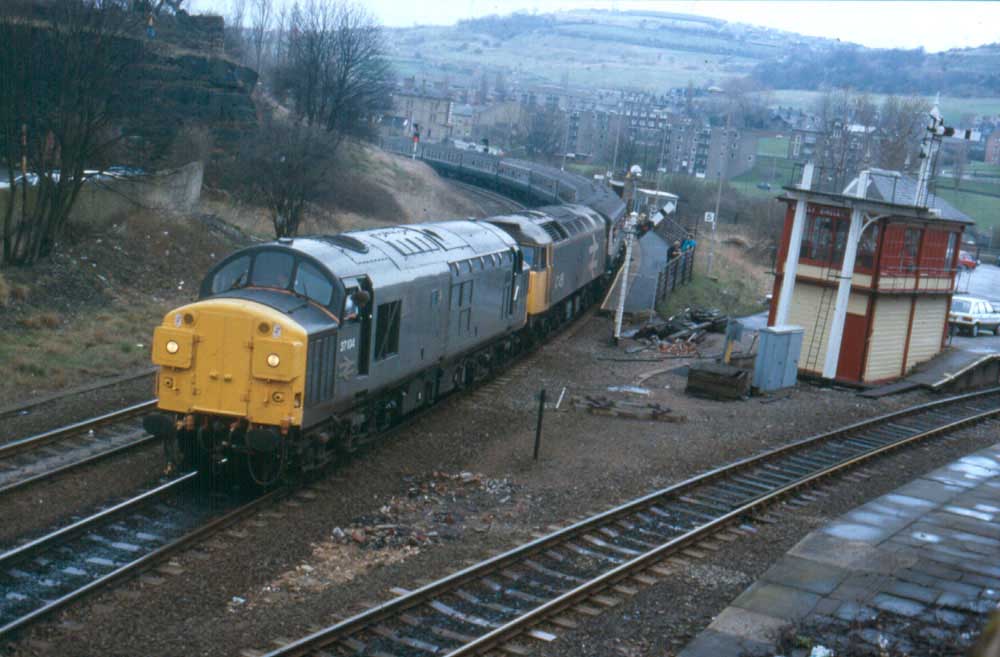
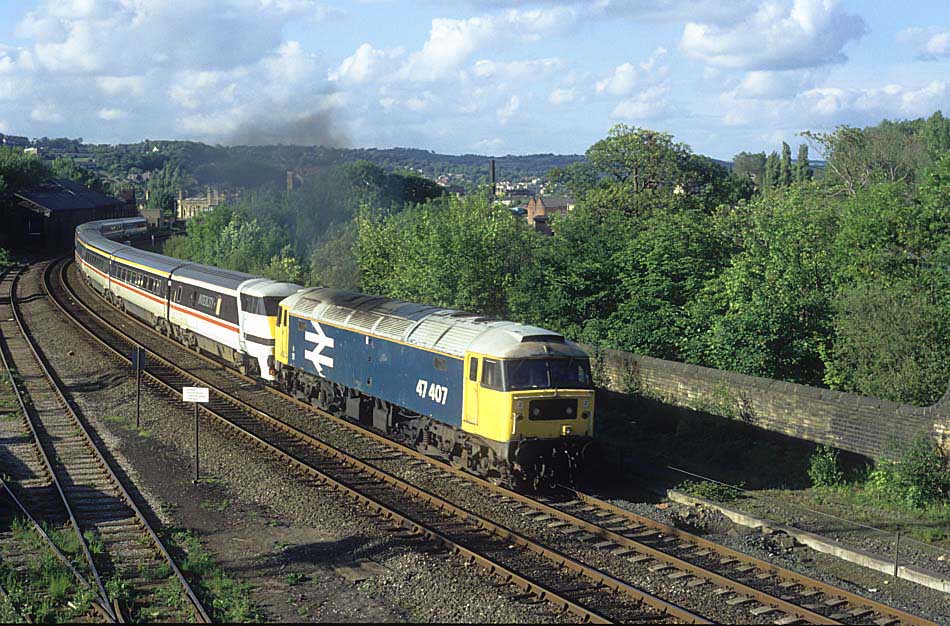
Bingley
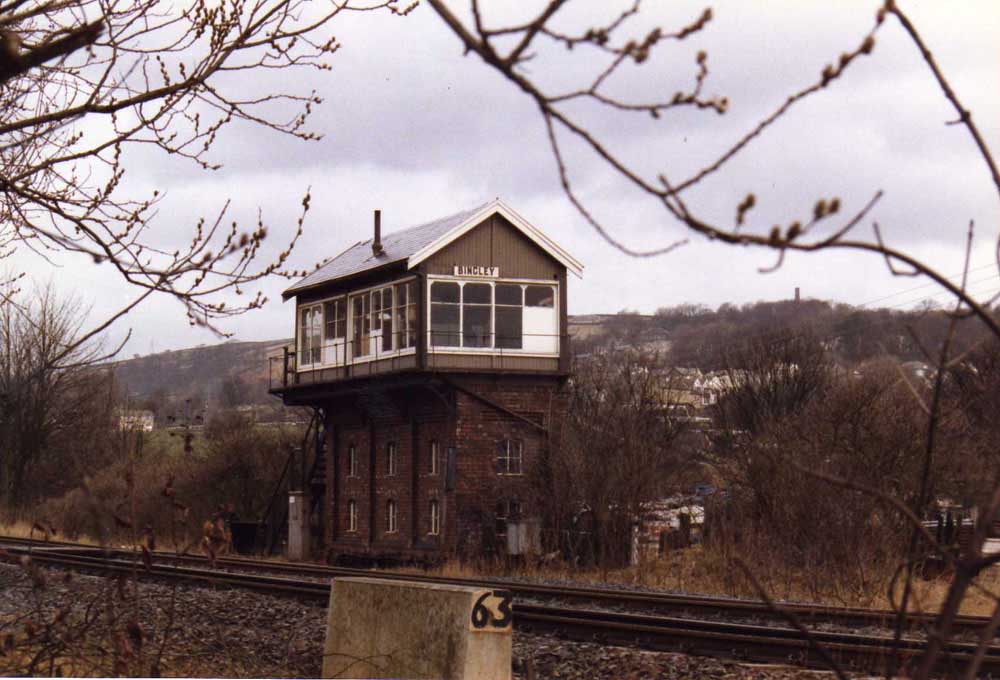
Keighley
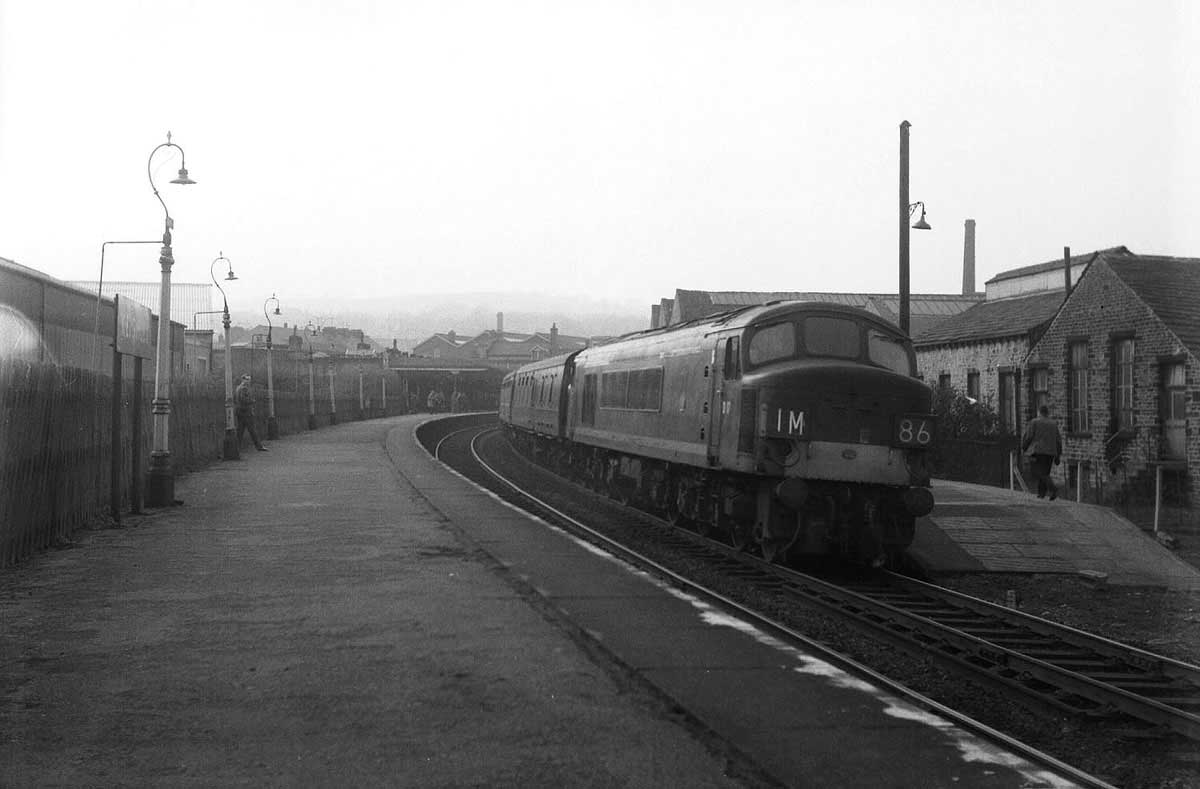
One Sunday morning we were up at Keighley with a ballast working, with three of us in the cab. Out of the blue there was a knock at the cab door, on opening it we found a gentleman asking for permission to enter the cab. He climbed in, showed me his cab pass and then started to ask questions, firstly telling us this was a T3 possession and he was inspecting the crews paperwork! It was bedlem as we searched for and found the paperwork requested. Then came the questions - do we have hard hats? we show him our hats. Do we have the TOPS paperwork for the train? the guard show him the necessary paperwork. Do we have hard shoes? so we show him our shoes, only it turns out he doesn't have the hard shoes, just hush puppies! At which our man says its time to go and see the other crews, so we all said 'Don't forget to put your orange vest on' (he didn't have one!).
Steeton
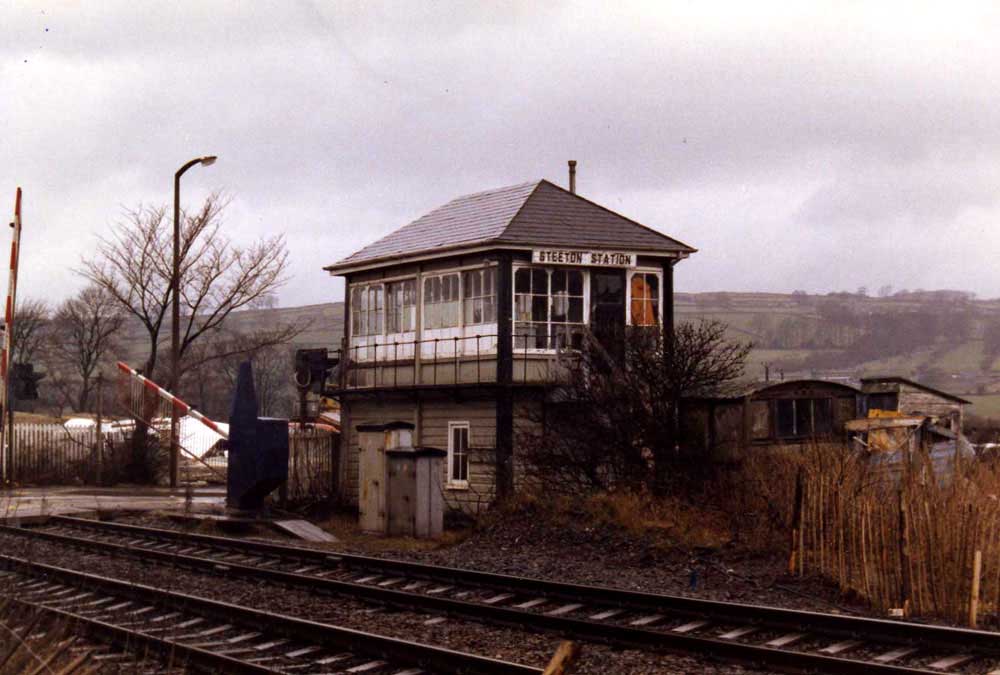
Skipton
Skipton was graced with a large station much of which still remains, something which cannot be said for the considerable goods yards that were once here. Skipton would eventually become the northern limit of the electrification from Leeds, the wires extending just north of the station to Broughton Road sidings
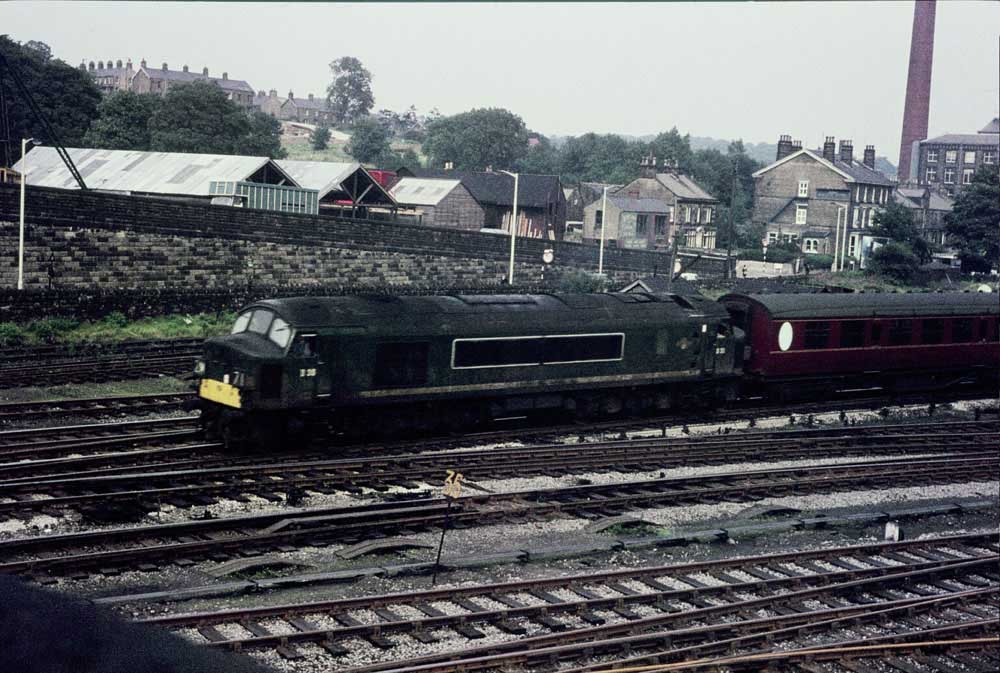
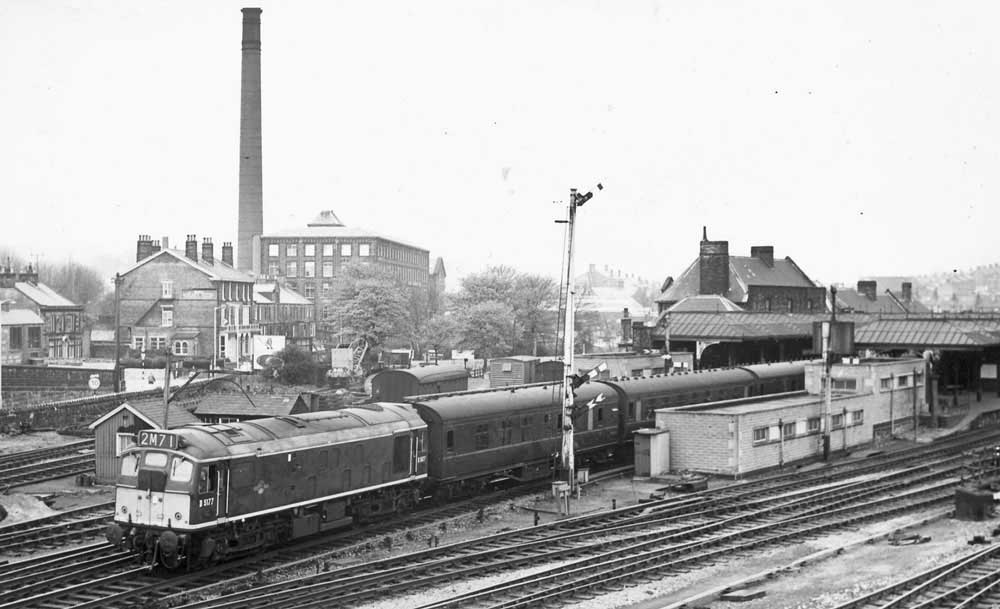
During my time at Holbeck the local union were occasionally in dispute with management, I think this happened in 1975/76 & 1980. The dispute led to a 'work-to-rule' with secondmen being required on all jobs, including DMU powered services and shunting work such as the Parcels pilots at Leeds City! For me this included a lot of secondmanning on the Leeds - Morecambe jobs, the 'work-to-rule having led to a number of DMU's being taken out of service. These services did not overtax the Class 25's with usually no more than three coaches being used. However dealing with the Spanner boilers on the Class 25's was always quite a challenge as I could never get them to work properly! As one driver chastised me saying 'We used to get steam out of a forty foot boiler with a chimney on the other end (referring to a steam engine) and you can't get this to work!'
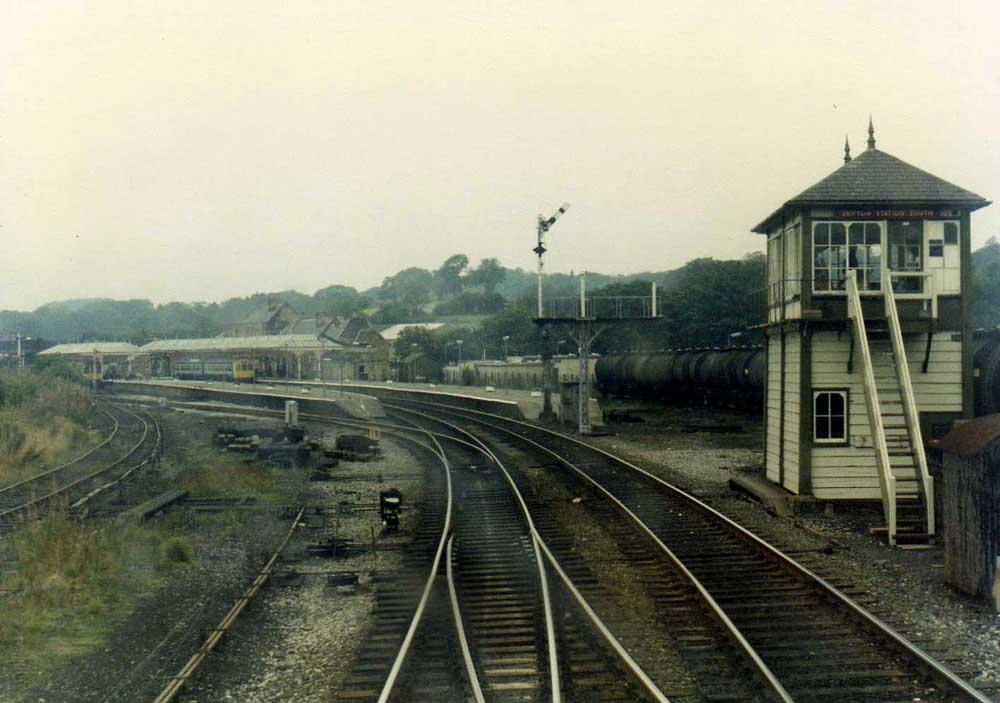
In the above view to the right can be seen a train of tar wagons. These were worked as the the 6P38 10.10 departure from Heysham, the arrival timed for 12.20 at Skipton. Here they were be shunted into the 'Bradford' siding to allow them to be discharged. Departure would be as the 6F55 13.45 to Stanlow. It was necessary to reverse the tar train into the 'Bradford' sidings, on one particular day the shunter, named Howard misjudged the shunting movement causing the wagons to demolish the bufferstops and put the wagons in amongst the Post Office trolleys - the siding was then nicknamed Howards Way.
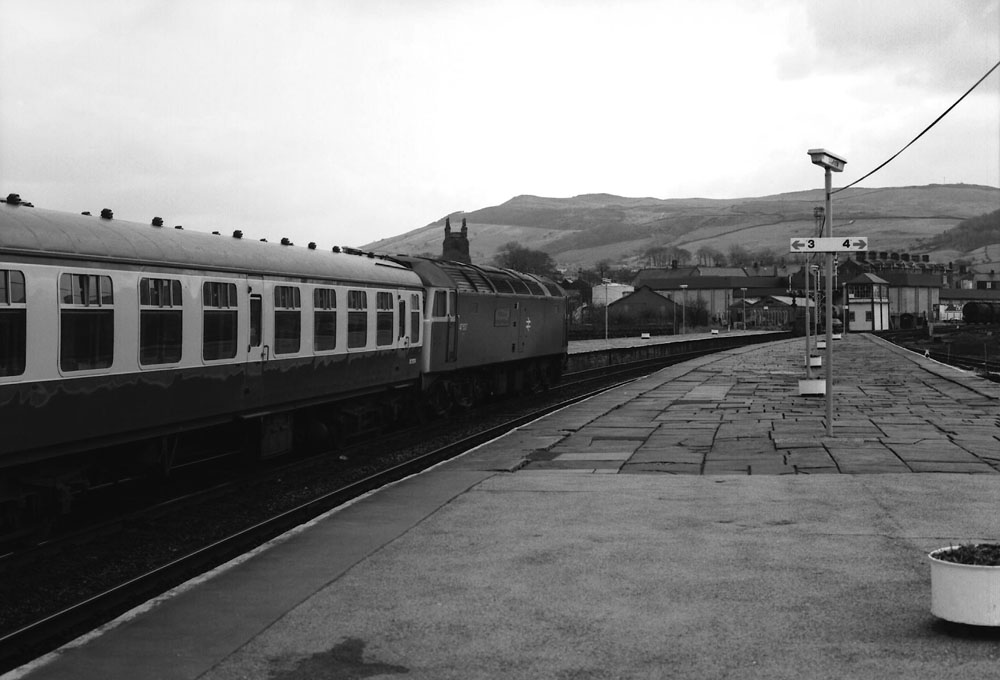
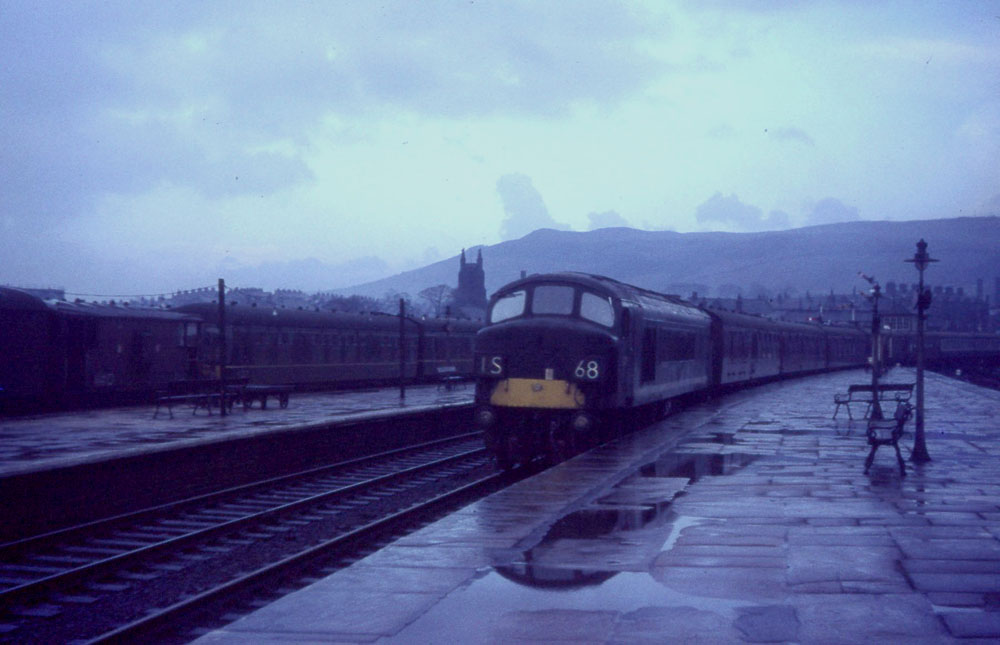
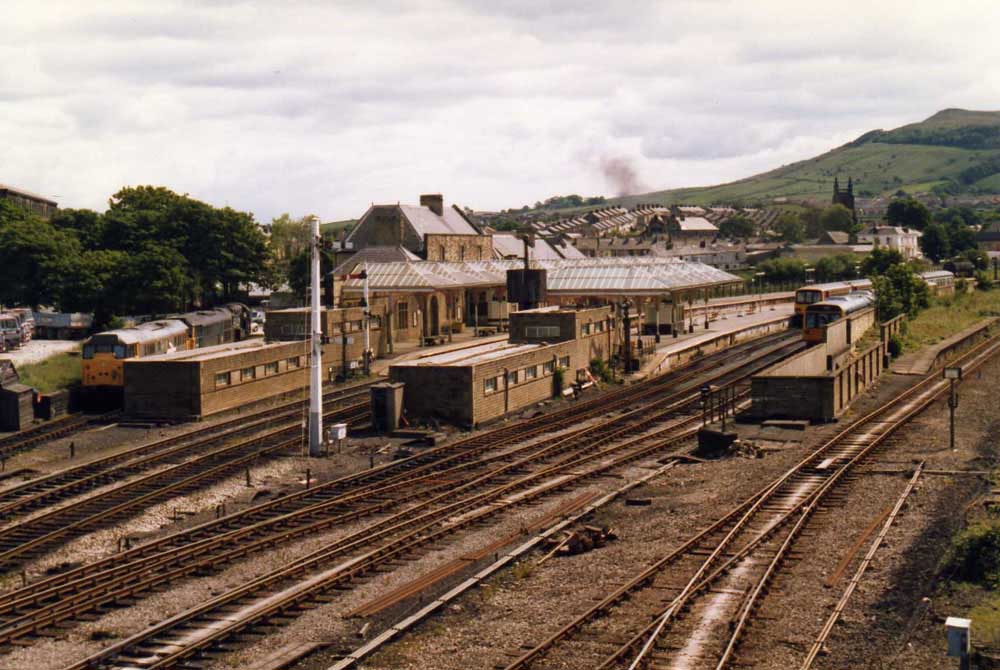
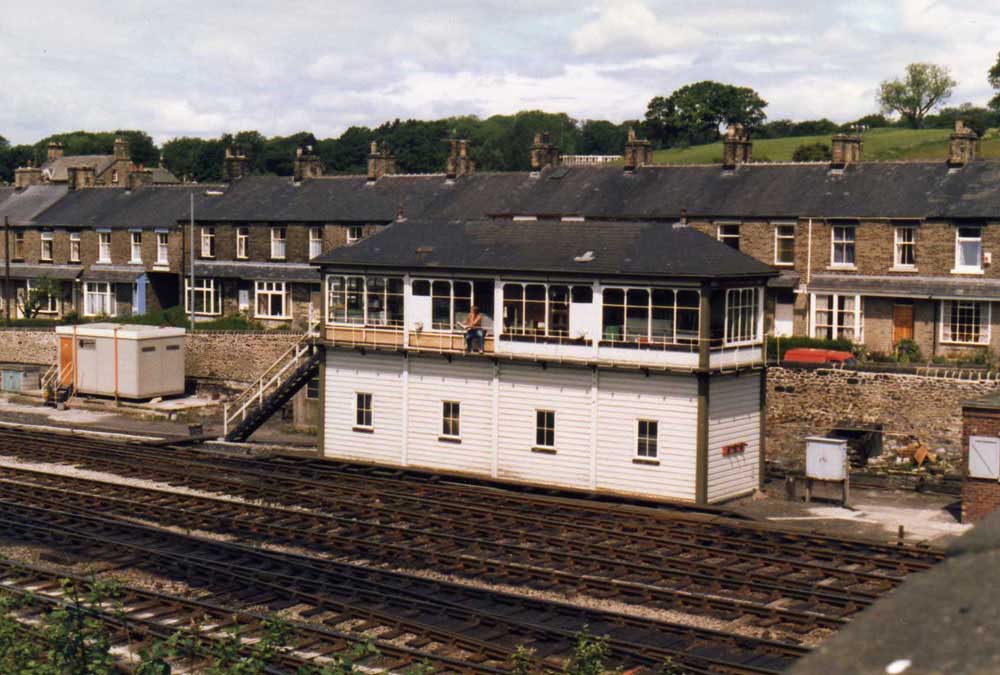
When working the Rylestone branch it was necessary to visit this signal box to collect the token and a set of keys. Early one morning I was sent to the box to obtain these items, on arrival there I knocked on the door, made my request and was told by the signalman to 'go forth & multiply' (or words to that effect) because he was having his breakfast and didn't wish to be disturbed! Returning to the locomotives I relayed all this information to my driver, a rather large gentle giant of a man. He got up from the driver's desk, left the locomotives and went over to the box, returning a short while later with the token and the keys!
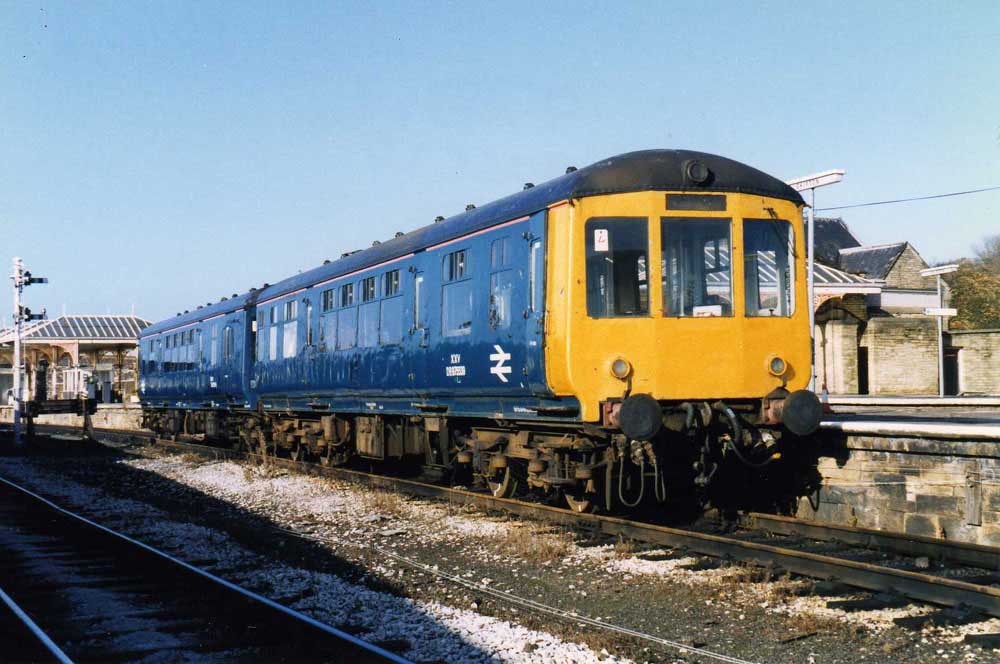
I had driven the Stourton saloon up from Neville Hill to Skipton. After arriving at Skipton I took some photographs of the set, having just completed this I did not realise that I had created a bit of a commotion. Whilst taking the photographs someone from the station office witnessed this and thought maybe I was someone with malicious intent (terrorists in Skipton, maybe?), with a voice shouting across the platform, 'What the hell are you doing?'. The situation defused once all the subterfuge was revealed. What however did not make too much sense was putting the set in platform four, at this time it was a dead end and since the set was going on to Carlisle it would require a reversal back to Skipton Station South box before heading north.
(SH) One of the occasional jobs handled by the Clitheroe gang was to provide lookout for the Officers Inspection saloon whenever it might run. One condition of the job was to be able to handle large amounts of tea. On one such occasion, Thursday January 24th 1991 I drew the short straw for such a working and was dropped off at Blackburn station to await the special, a trip to the Supervisor's office was met with an offer of a brew. The special arrived about 9.20am behind a Class 31, after joining the train there immediately followed the offer of a bacon butty and a cup of tea! The special headed off in the direction of Hellifield stopping at various locations so that the top bosses could check the sleepers where we had dug trial holes.
At Settle Junction we backed into the down sidings to enable dinner to be taken (more tea) - dinner was three courses, with a starter of vegetable soup, followed by lamb chops with new and roast potatoes and gravy, concluding with a large piece of chocolate gateau! Following this and whilst waiting for a road up the Settle & Carlisle to Appleby I went across to Settle Junction box to see the signalman, a good friend of mine. This meeting naturally involved another cup of tea! Appleby was the section end for our gang so once we reached here we promptly made tracks back towards home, I jumped into the Class 31 for the ride south to Hellifield, across to Carnforth and then down to Preston. This long day involved some overtime pay, but for me the adventure of the whole day was payment in itself!
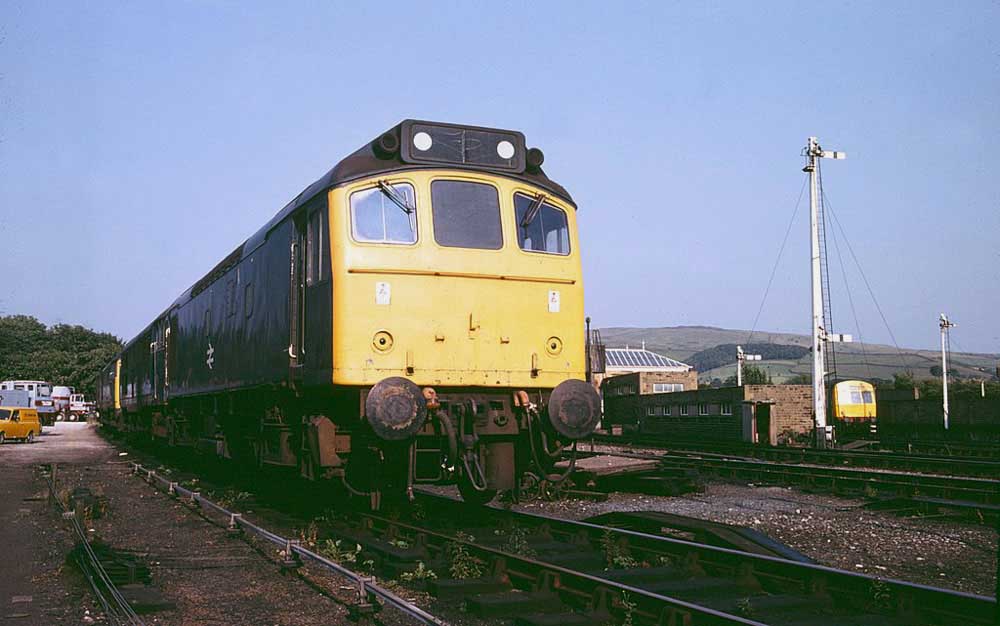
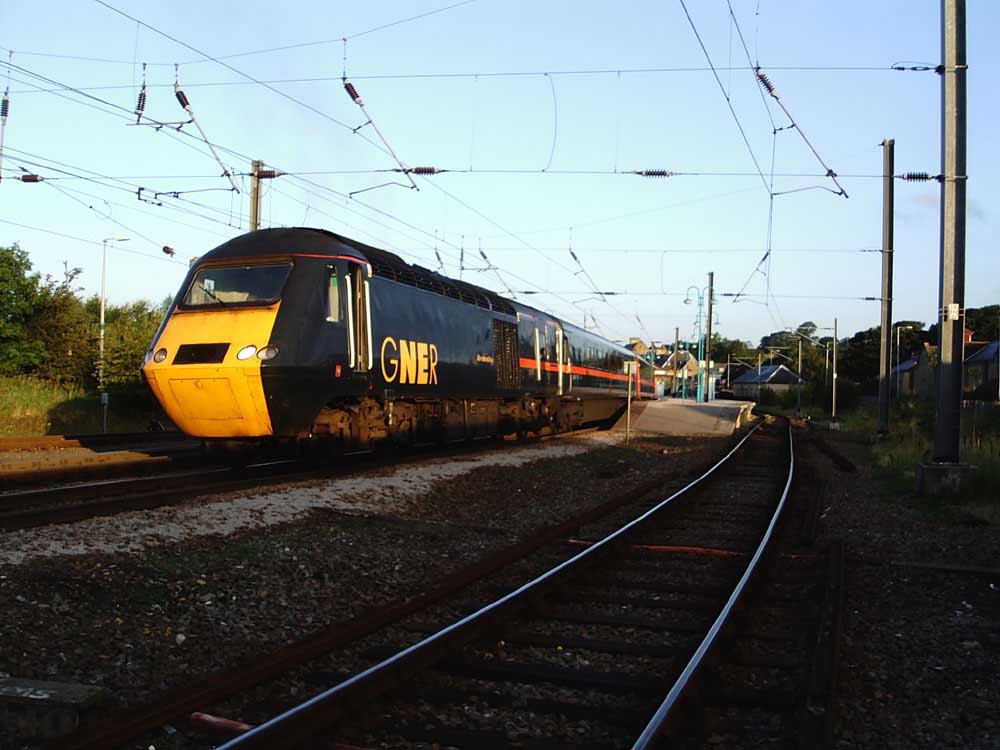
Michael was in charge of the above HST working, this was the 5A13 empty coaching stock from Neville Hille to Skipton with an HST set (power cars 43115 & 43269). Here it will become the 1A13 Skipton - Kings Cross, with the reversal at Leeds City. The train is in No.2 platform, to the right is No.1 platform, and the photograph is taken from just about where Skipton South Junction signal box used to be.
Of course you might ask yourself why is the line all the way from Skipton to Kings Cross electrified, yet here is a diesel powered HST about to work the whole route under the wires? Apparently when the route from Leeds to Skipton was electrified it was done in a manner that would allow the operation of the local electric multiple units, but if a Class 91 were sent over the route there would be serious operating difficulties due to insufficient neutral sections and the installation of three aspect rather than four aspect signals.
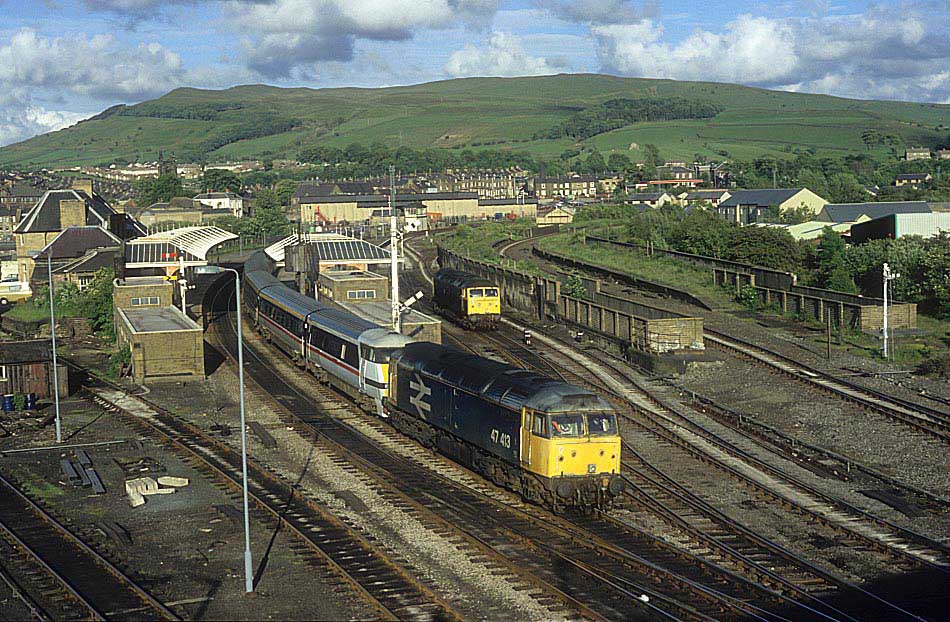
![]()
The Grassington Branch
Saturday April 30th 1977
Book On 00.50 for Holbeck diagram 725
Locomotive 25285 & 25296 with 30 empty wagons 500 tons, run as a Class 6
0M55 depart Holbeck 01.10, arrive Hunslet Down 01.20.
6M55 depart Hunslet Down 01.40, arrive Skipton 02.45.
At Skipton run round train, collect token for single line and key for crossing gates at Rylestone.
6M55 depart Skipton 03.10, arrive Rylestone Swinden Lime Quarry 03.50.
6E20 depart Rylestone Swinden Lime Quarry 06.50, arrive Skipton 07.50; 30 wagons 1,275 tons, run round train, return gate key and token.
6E20 depart Skipton 08.10, arrive Holbeck 871 signal 09.25; train taken forward by Neville Hill crew to Hull Dairycoates.
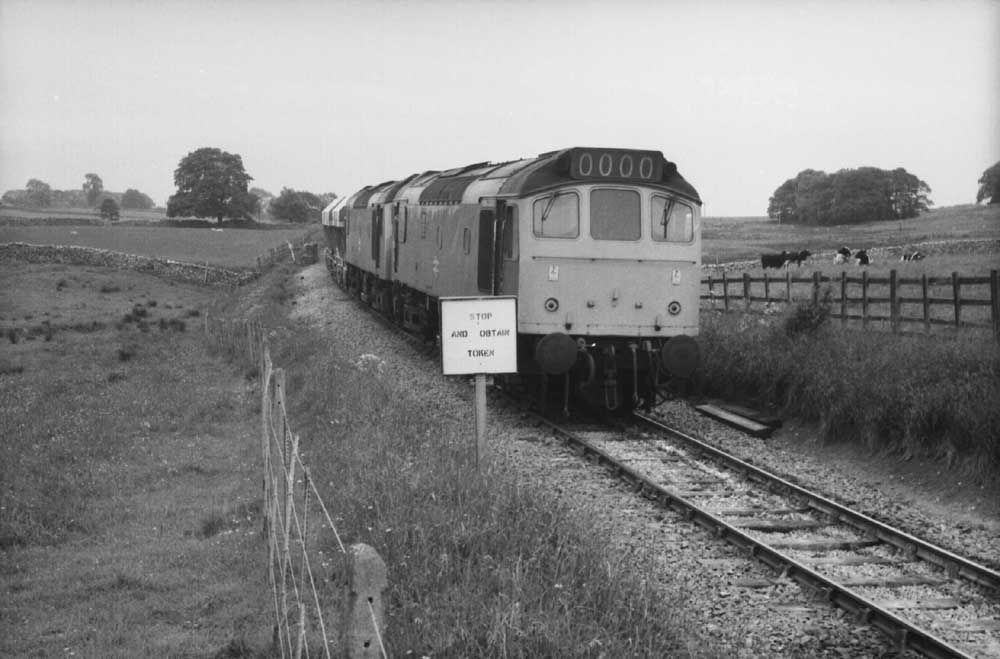
Because the above view is in daylight this working maybe the Skipton tripper with the Class 25's doing a little shunting. Normally it would be dark when you left the Works with the block train.
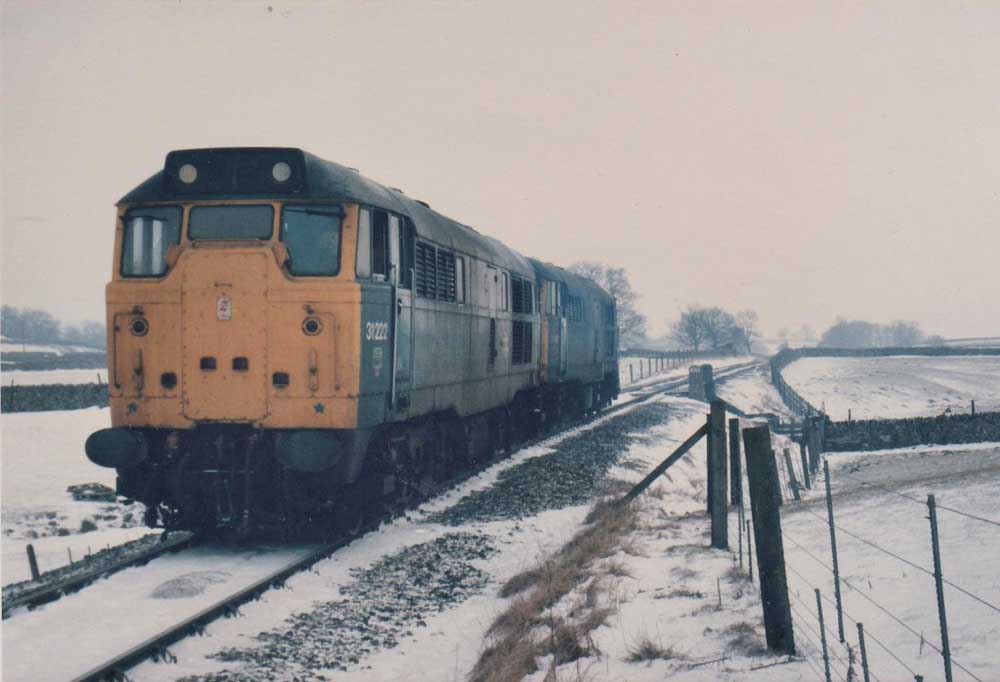
In the above view there has been a modest snowfall, but once in the complex you couldn t tell if it had snowed or not, it was always white on the ground! My diary for the day shows that we booked on 04.14 and booked off at 12.40, the diagram number was Holbeck 350.
I had a drive with Dennis Johnson up there one summers morning, Dennis a great character, had brought a gun, whilst we made our way to Rylestone and the lime works at Grassington, Dennis was shooting the rabbits, of course whilst going slowly with an empty train it was easy to spot them, on the return journey what fun, he'd be shouting, 'Dan, slow down there's one here', of course trying to slow down an 1,800 ton train full of cement on a railway which was up and down dale wasn t easy, the next thing he was off, running in the field to get the rabbits he'd shot earlier. On arrival at Skipton a few of them were handed to the signalman for his dinner!
At Rylestone (where the station was) you had to stop and open the crossing gates and of course close them when you had gone through. On one very still summers morning we had stopped at the gates, Geoff Williams the guard, got down to open them for the train. In the stillness of the morning you could hear a car racing through its gearbox, Geoff began closing the gates, all of sudden there were screeching brakes as the car came to a dramatic halt in front of the gates, with Geoff stood in the middle of the gates, he turned round and waved us through them, how the hell the car stopped beats me and if he wouldn t have stopped he would have taken Geoff with him. Why didn t the guard wave the one car through the crossing, but not Geoff, he made the car wait, whilst we struggled to get the train across the road which took about 10 minutes!
One morning Derek Walsh, another character didn t stop at the gates, the train slid right through them, on getting on the phone to the signalman, he told the signalman what had happened and then he asked the signalman if he was saying anything? The signalman's reply if you can rebuild them, I won t say anything! Years later another similar incident occurred, but this time on the return to Holbeck Shed the driver asked the Shed Master for a chit to obtain the wood from the broken crossing gates, and yes, whilst he was there with the Shed Master, he got a right roasting!
In the view above the the Class 25's are standing, it was very hard to get out especially on a slimy rail, as it just rose there for about quarter of a mile, one morning I had a driver Antony Wilson, all night telling me how good he was and what he had done in his railway career. Well this particular morning was interesting, it had been drizzling all night. When departing from the lime works, you usually had 14 16 wagons on, well we came out of there slipping and sliding, eventually I got a load of sand and began walking for about quarter of a mile, but we still couldn t get them out, so the guard split the train and out they came, the Grassington Pilot push the other half of the train onto us and the guard coupled it up. Eventually, we got the lot out of the lime works.
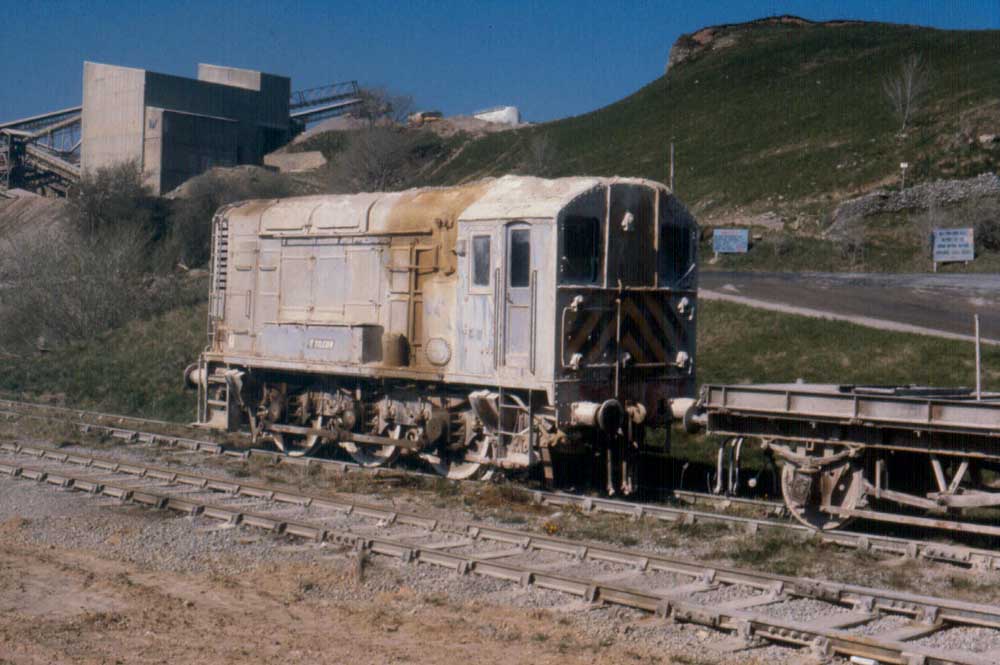
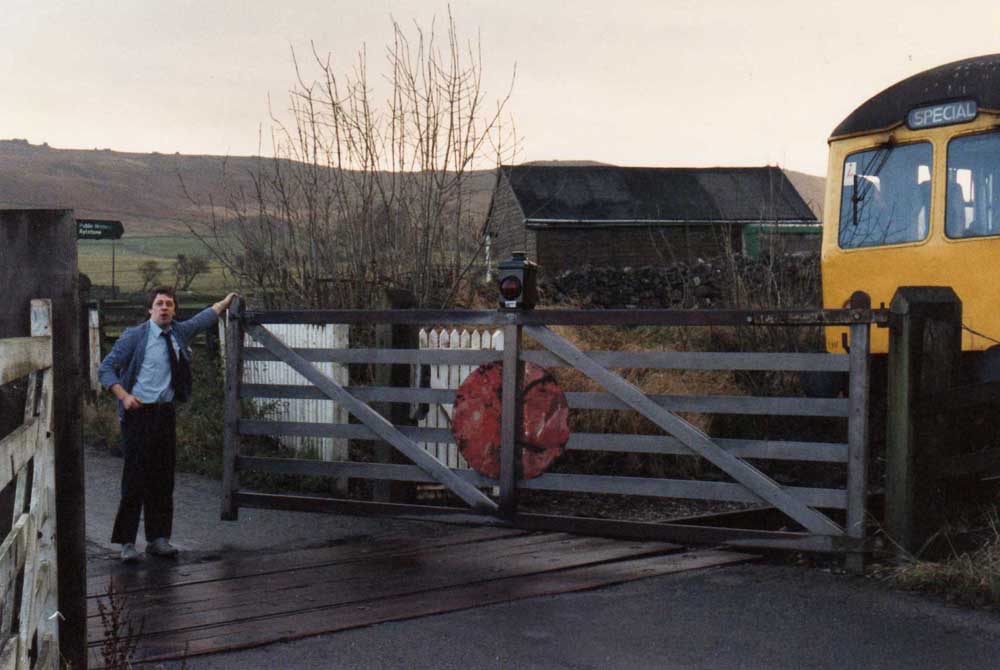
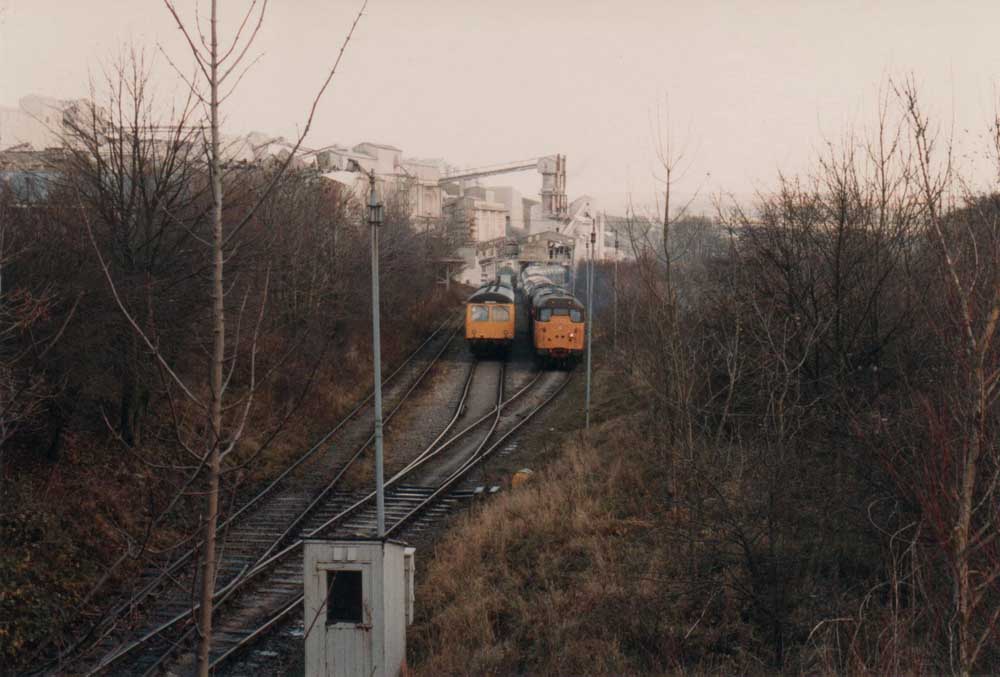
![]()
Gargrave
Gargrave was the first station west of Skipton.
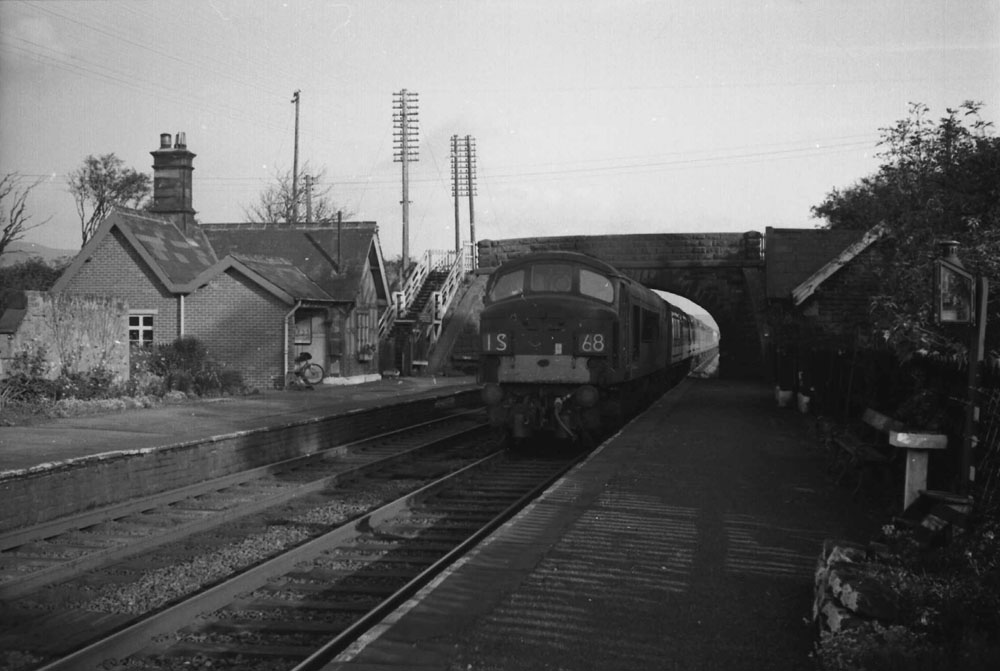
Michael advises the 1S68 is heading northbound on the 'Down Line' (the braking point for Gargrave if you were going to stop at the station was a pair of trap points), the 1S68 was the 10.15 weekdays departure from St Pancras and went forward to Glasgow Central & Edinburgh. The time of the picture will be about 15.20ish if the train was on time... departure from Skipton was at 15.13.... If the train was running on a Sunday it was the 09.50 departure from St Pancras and only went to Glasgow Central. Despite its earlier Sunday departure time out of St Pancras the passing time for Gargrave would be about 15.46ish, departure being from Skipton at 15.39...... there must have been more stops between St Pancras and Sheffield on a Sunday!
Hellifield
After leaving Skipton the railway line crosses the watershed from the River Aire to the River Ribble. Water from the Aire will eventually reach the North Sea, the Ribble will flow into the Irish Sea. A more important flow however joins the Midland route at Hellifield, the former Lancashire & Yorkshire line comes in from Blackburn. The Midland also used this location for attaching/detaching through coaches to a number of locations through out its empire, thus adding to the importance of Hellifield.
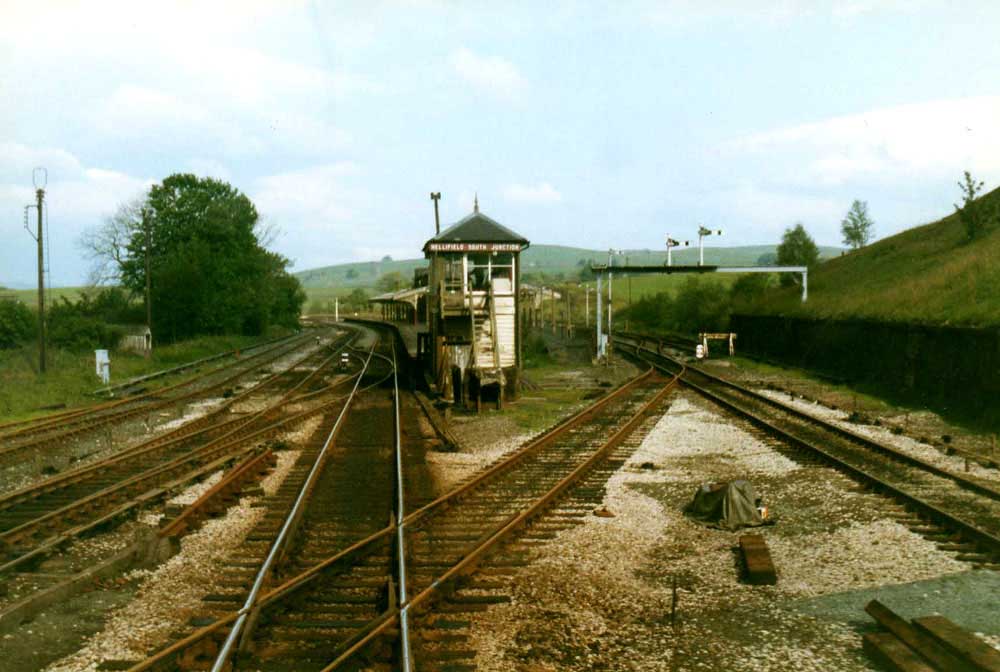
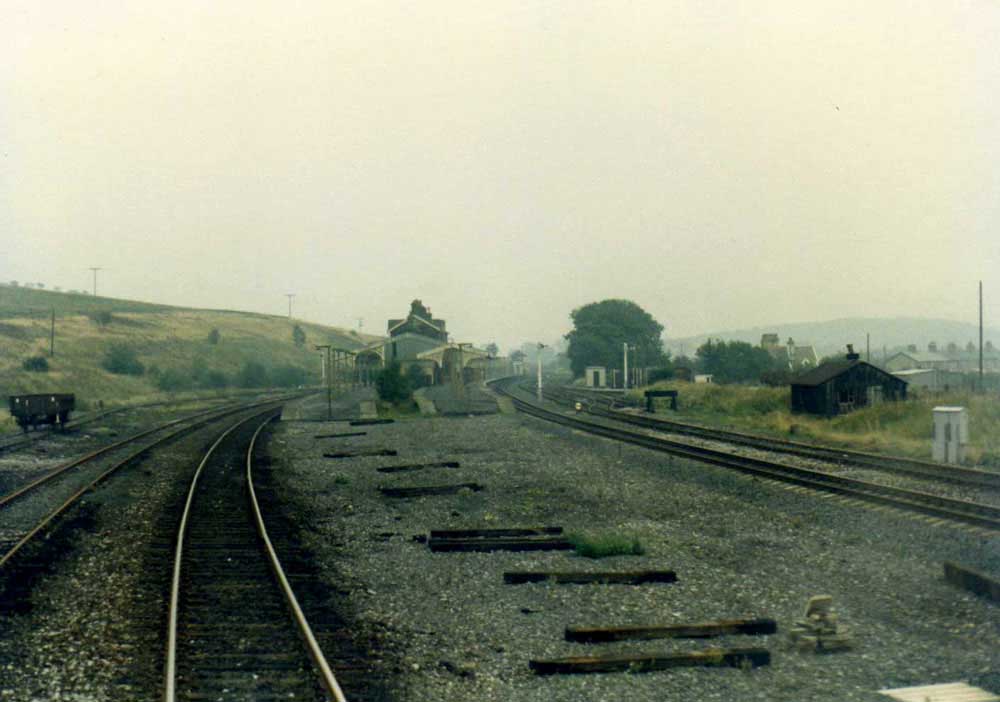
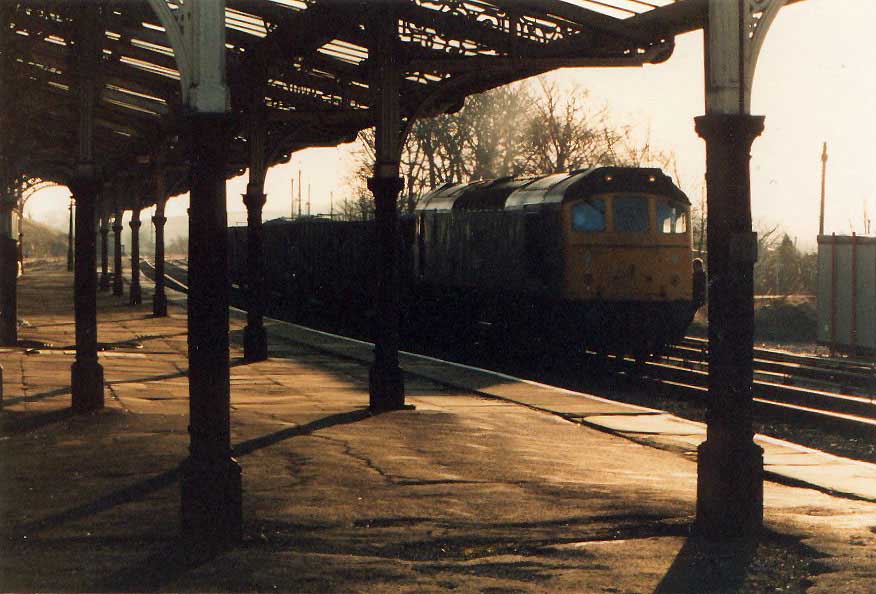
Whilst working a Leeds - Morecambe service we made the regular stop at Gargrave and unknown to me at the time one of the passengers picked up was well and truly drunk. After setting off the guard came through and asked 'Can you check this man, I think he's dead?' With a couple of minutes to spare at Hellifield I went back to the passenger in question, who fortunately still had a pulse and a very definate smell of booze about him. The guy was well and truly out of it so on arrival at Morecambe we left him in the train whilst we went to get some fish and chips. The train was actually left in the sidings whilst we were gone, quite why we're not sure, possibly this regular movement kept the points free and operable. On our return the passenger was still sound asleep oblivious to everything, which was perhaps a good thing as the passenger had only wanted to go to Long Preston, a couple of stops north of Gargrave! On our return journey to Leeds our station time at Long Preston was excessive, opening the driver's window I looked back and saw the guard arguing with our drunk passenger. Apparently the passenger couldn't understand why a ten minute journey had taken several hours!
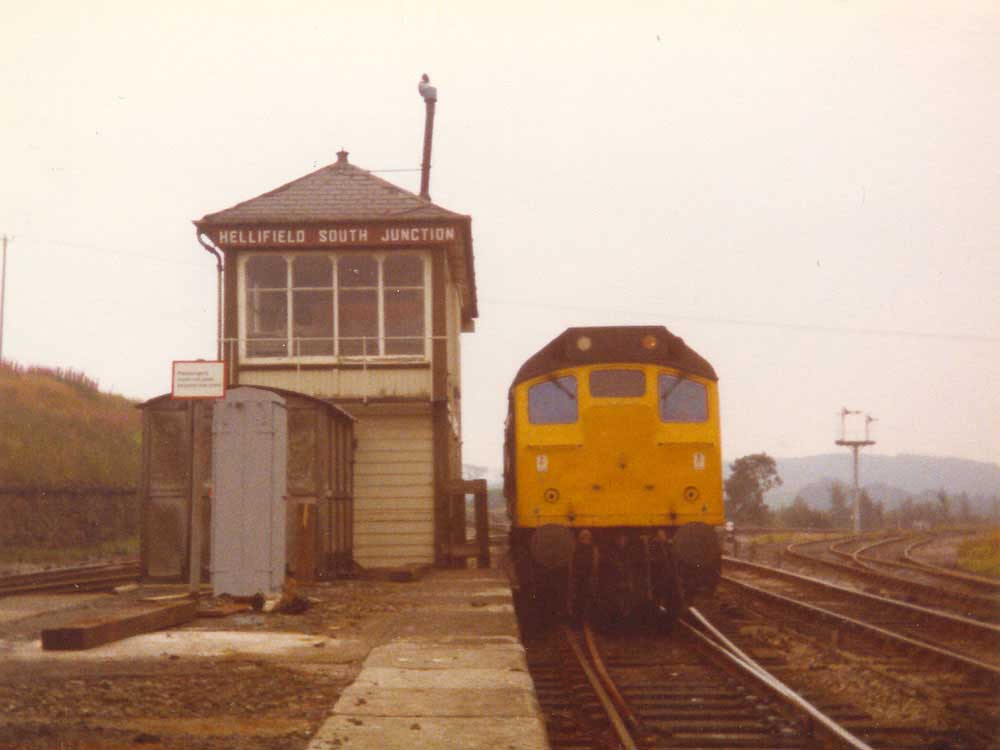
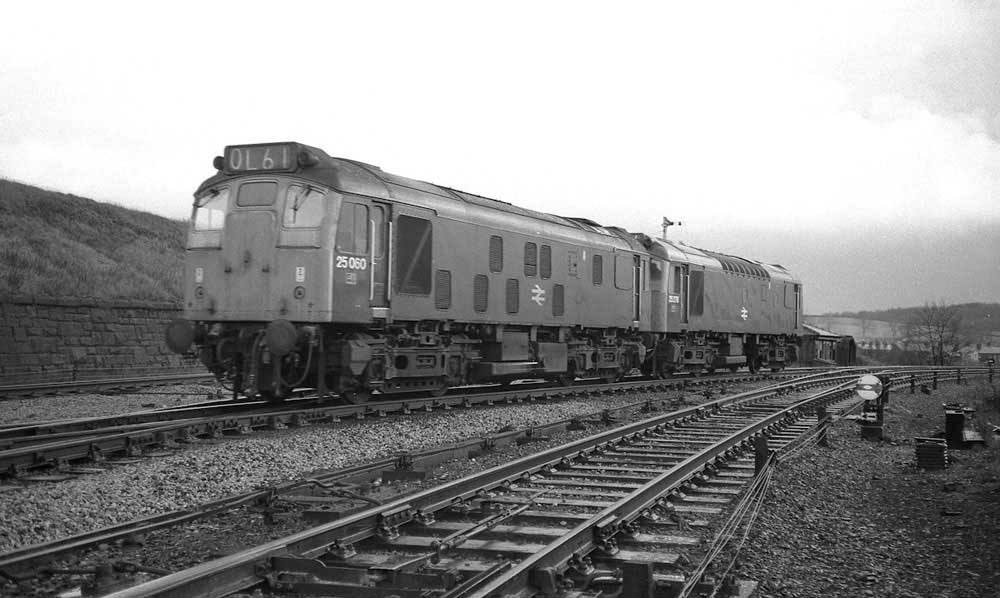
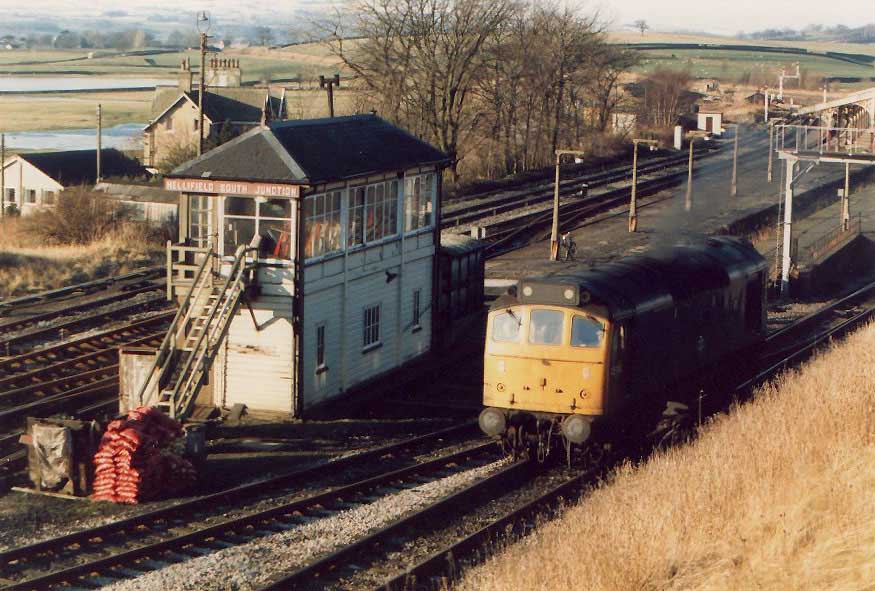
(SH) Elsewhere on this page is a reference to the snow clearance duties occasionally required of the track gangs - an example of just such a callout is recorded here when on snow duty at Hellifield South Jct. Its nothing exciting and pretty uneventful, but nevertheless a critical part played out in keeping the railways running during adverse weather conditions.
It was the Saturday night of the 2nd/3rd February 1991 when me and a colleague were required to go to Hellifield South Jct to be put on standby for snow duty, as there were some overnight WCML Diversions (mainly sleeper trains) running up and down the S & C between Carlisle & Preston. There was no snow that night when we set off from Clitheroe, but on reaching Hellifield it was obvious that a fair quantity of snow had fallen. The snow was just below the rail head but enough to jam the points. As we walked along the dark snowy platform towards the signalbox at 9pm there was no sign of the signalman, so we waited in the crew bus until he showed up. So it was kettle on and a cup of tea until the signalman finally arrived at midnight.
With the snow coming down we put on our heavy wet weather gear and sou'wester hats, starting off by brushing the points between the switch blades and then put some de-icing lubricant on the slide chairs to stop the falling snow from sticking, and clipping the points to stay in position. With the only traffic that night being WCML diverted traffic the signalman kept the points in the same position for the Up and Down roads for the Blackburn line. My colleague stayed in the crew bus, and I again drew the short straw (well it was as far as my mates were concerned, but a paid 12 hours at double time bonus to me) of having to sit in the signalbox in front of the open coal fire with yet another cup tea and watch the diverted sleeper train pass. The last one passed at around 4.30am and we proceeded to unclip the points and clear the remaining snow before the points were set back to normal and the signalman shut the box.
Come rain, fog or falling snow
To the cabin you shall go
Get the card and deal away
And leave the work for another day!
The above story is perhaps in contrast with what the train crews did with some of the antiquated equipment that could be found in the Hellifield area.
Just been watching a advert and it brought a story back to memory, do you know the old, old telephones with a seperate mouth and ear piece ? We got stopped at Hellifield home signal, and as usual, I got on the phone to speak to the signalman at Hellifield Signal box, on opening the box, I found this contraption, it also had a rocker switch, well it was something out of a comedy show, I started shouting in the mouth piece, no answer, so then I started shouting in the ear piece, no answer, so, then I found this rocker switch, situated on top of the phone, no I didn't shout at that, I started rocking the switch and shouting at anything I could find, now with the ear piece firmly on my ear and swinging on the rocker switch and talking, I thought, I've cracked it, no, but whilst trying to talk to the signalman, I could hear this wi....... llll....... yo....... gi...... ove............ an........... pu......... th....... swi.bac................. norm, I must have sounded the same to the signalman, so we had another go, giv............. ove.... with.......... tha... phone............ so I did, eventually the signalman spoke, christ 'he said' give over with that rocker switch, yes I'd cracked it, after speaking with the signalman, now properly, we got on our way.
On our return to Holbeck Shed, my mate decided to play a joke on the foreman, wrong foremen to play a trick with, but anyway, my mate told me to go into the foreman and tell him about this phone at Hellifield and explain to him what had happened, so off I went, but I put a extra bit in saying that I couldn't ring the signalman up and speak to him, because I had no change to put in the slot and we had to 'borrow' some coins for this old phone! And in future when we depart from the shed we need a bag of coins, I think the joke backfired because he told me to leave the office!
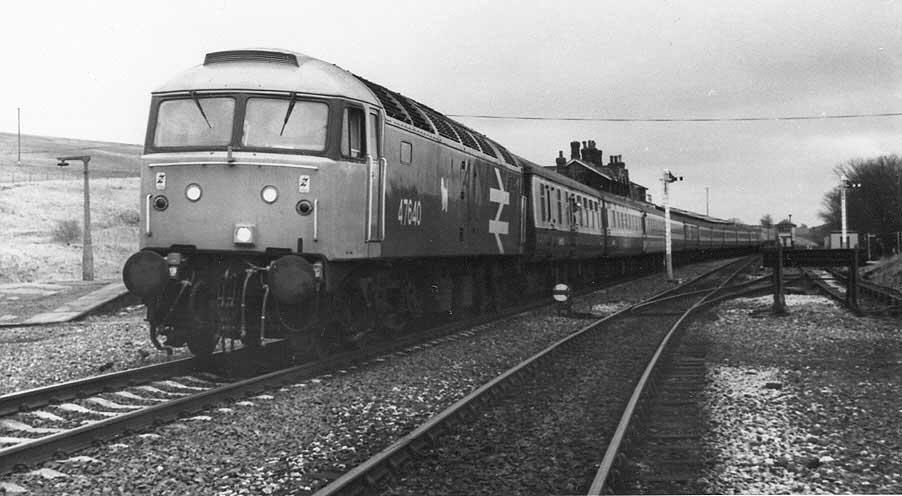
Long Preston
Long Preston lies a couple of miles north west of Hellifield.

Your webmaster was too young to witness the transition from steam to diesel so its always exciting for me to come across pictures which capture those events which can be clearly linked to the Modernisation Plan becoming a reality. Here is just such a view, it features the local 8.05 Carlisle - Hellifield and the 11.57 return. During 1960 Carlisle received D5079 on loan for driver training and it became a consistent performer for many months on this service. When D5079 was transferred back south to Willesden its duties were taken over by the more familiar steam locomotives. After completing its order for Class 45's in October 1961 Derby set about its order for the Class 46's, with the first one, D138 being placed into service during November 1961. Although allocated to Derby (17A) it was noted during March 1962 covering the Saturdays only working of the 8.05 & 11.57 local service, which presumably explains the events captured in the above photograph. No doubt with such a light load the Class 46 could offer some sprightly acceleration, definately not a working to tax this machine.
Settle Junction & Settle
At Settle Junction two route diverge, the Settle & Carlisle line beginning its famous climb to Ais Gill, whilst the former Midland Railway route to Morecambe & Heysham heads off to the west. Both routes were worked by Holbeck crews.
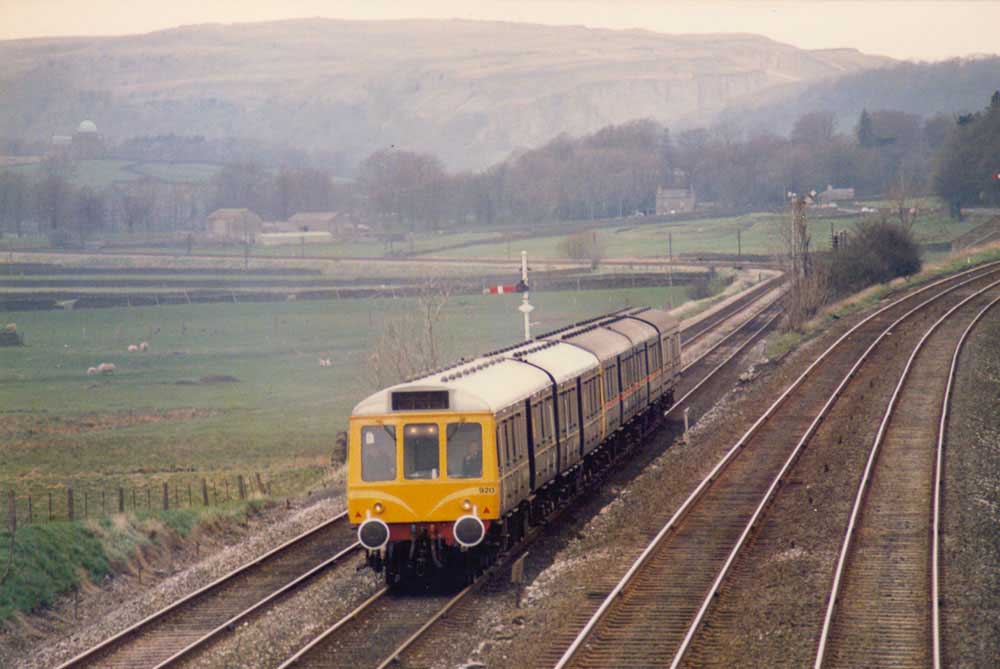
On a now long forgotten day sometime prior to 1977 we arrived at Settle Junction with our train stopped due to snowy conditions. After a short while I went up to Settle Junction signal box to sign the register in accordance with the Rulebook. Conversation ensued with the signalman and a can of tea was brewed. We were soon joined by my driver, in the mean time two Class 25's sandwiched between snowploughs turned up, our journey up the S&C looked like it was going to be heavily delayed. However after discussion with the signalman we were to be sent north via Shap, this was definately turning out to be an interesting day!
My driver knew the road to Carnforth, here we picked up a Carnforth conductor and set out for Shap and Carlisle. Our return was over the more normal S&C route, we had a Class 40. In many places the snow was a foot or so above the rails, you could hear the snow rumbling under the locomotive, my driver providing much assurance that we weren't about to come off the road - what a day that was, and no camera!!
On the southbound trip my driver had dipped into his memories of the route, including some tales going back to the days of steam. One in particular related to the obtaining of a Christmas tree by the train crew as part of the holiday decorations. This required the train to be stopped in section a little longer than normal, so that the tree might be 'acquired'. The next day an explanation was required for this, the driver explaining he'd sneezed and lost his teeth, so they stopped and went back to look for them!
Heading north-west from Settle Junction our route follows former Midland metals for the first part of the journey. At Clapham the route takes a more westerly path until Wennington where the current line joins the Furness & Midland joint line to Carnforth.
Giggleswick
Heading west from Settle Junction Giggleswick was the first station reached for the Morecambe bound services.
On one passenger working I can remember coming back from Carnforth during the wintertime, it was black and Giggleswick station was unlit. On arriving at the station there was a right bang on the window, on opening this I was confronted by a 'lady' shouting and balling about there being no station lights on in the dark. I waited while she calmed down, when she finally stopped to take a breath I told her ' in the corner, right in the corner, there is a machine and in that machine one needs to put 10p in it for the electric!' Hearing this she went nuts, carrying on about the state of the railway, not knowing how much tickets were, the country in a state and so on. Fortunately I got '2 on the buzzer', said goodbye to the lady, shut the window and drove off, leaving her still shouting and carrying on!
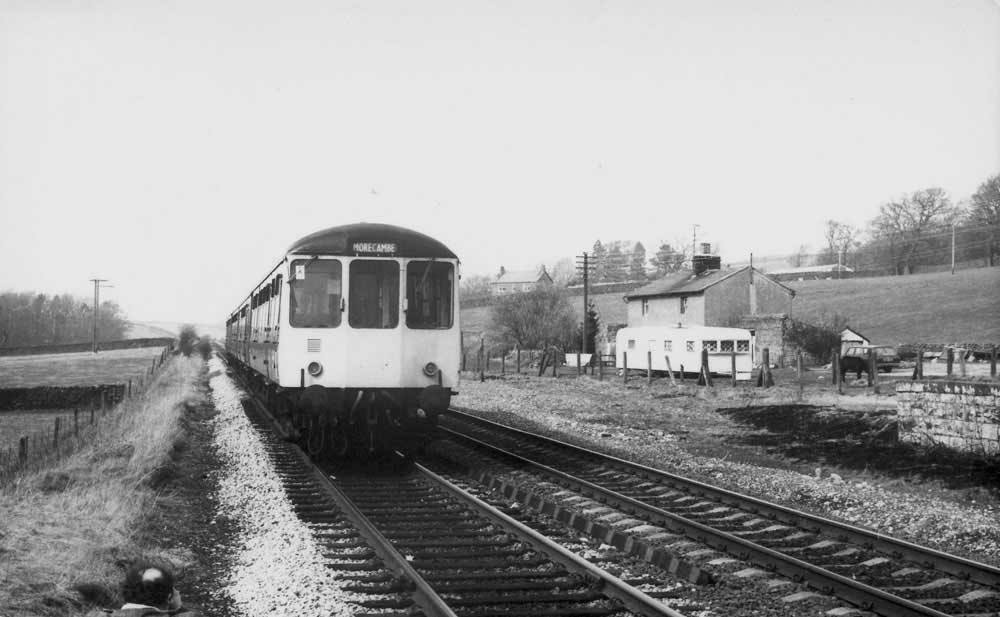
Wennington
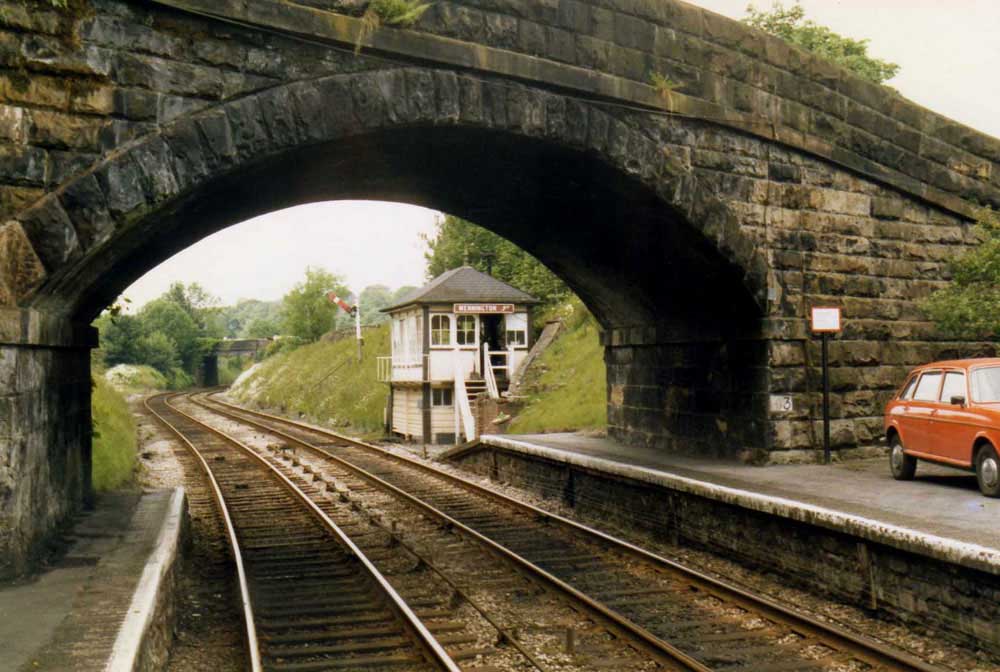
I know very little about signalling but Michael questioned the position of the signal. It was Wennington's Home Signal, which in BR's signalling book was an impossibility, because the Home Signal should be before you got to the signal box, so in reality this signal was his Section/Home signal, when it should have been his Home/Section signal and should have been placed maybe at the end of the platform. Any thoughts?
Just west of Wennington station the former Midland route ran on to Lancaster Green Ayre, Morecambe & Heysham Harbour. The portion of the line between Wennington & Morecambe closed to passengers at the beginning of January 1966. This closed route was frequently visited by Class 25's on the Leeds - Morecambe services.
Carnforth
The Furness and Midland joint line crossed over the West Coast main line just north of Carnforth before dropping down into Carnforth.
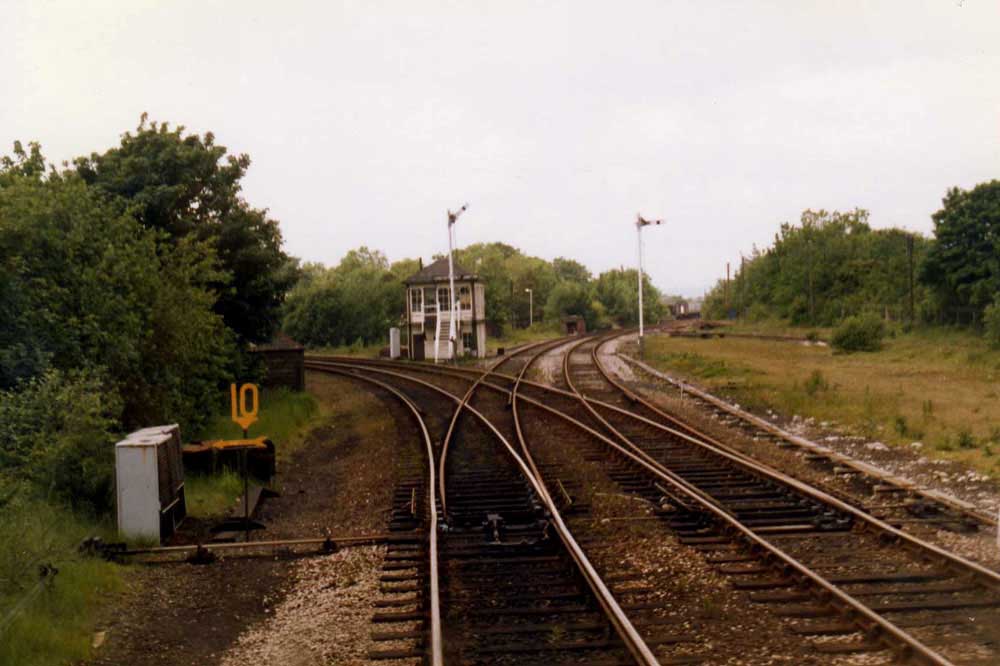
The above photograph shows the 10mph speed restriction on the curve that led towards Carnforth station. This restriction meant fun and games when the Class 142's arrived, because at this low speed the rigid wheelbase of these units would cause them to get stuck! The simple solution was to run the units slightly faster. The Class 142's would also get stuck on the curve at St Dunstan's coming out of Bradford Interchange, the restriction here was 15mph. Crimple Curve near Harrogate was another very sharp curve that gave the Class 142's trouble. However a greaser was added just before the curve, the slightly higher 20mph restriction made for some interesting running.
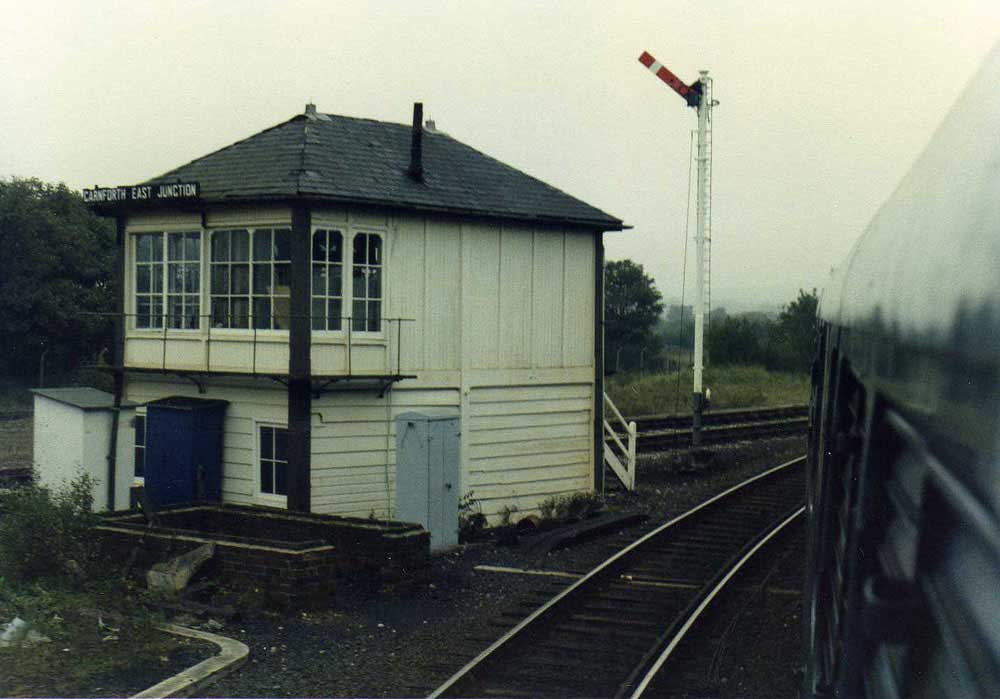
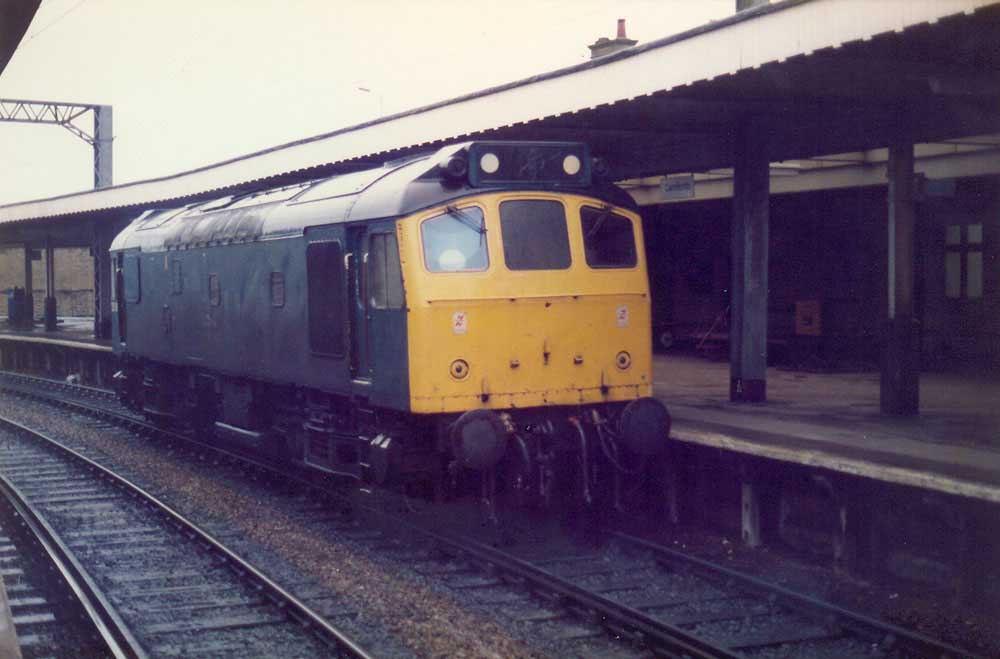
Although Carnforth would never have an allocation of any Class 24/25's the Type 2's would have a long association with the area, seeing much activity in the area right up until the very end of the Class in March 1987.
As a Driver I once worked a tank train to Carnforth with a Class 47, on the approach to Settle Junction the train was slowed down to 30 mph, once over the junction we accelerated back up to the line speed of 60 mph. The approach to Clapham Junction required a speed reduction down to 20 mph to negotiate the curve. Well, while braking here the whole train, including the locomotive slid, with the speedometer at zero and the train still moving it was major evidence that we were definately sliding. I took the train brake off and gently applied the locomotive brakes, which had some effect but the speed was still to high for the 10 mph restriction at Carnforth. With the help of the gradients and continued use of the train brakes and the locomotive's straight air brake I was able to bring the speed down to a point which allowed the safe navigation of the Carnforth restriction. Remarkably there was not one 'flat' wheel on the whole train, although my underwear did not hold up so well! The return trip was back on the cushions.
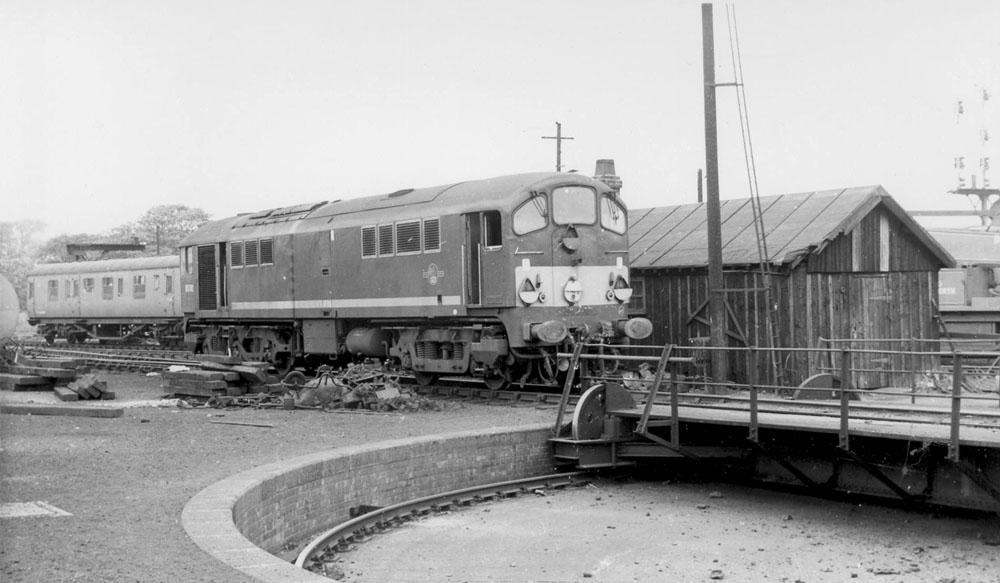
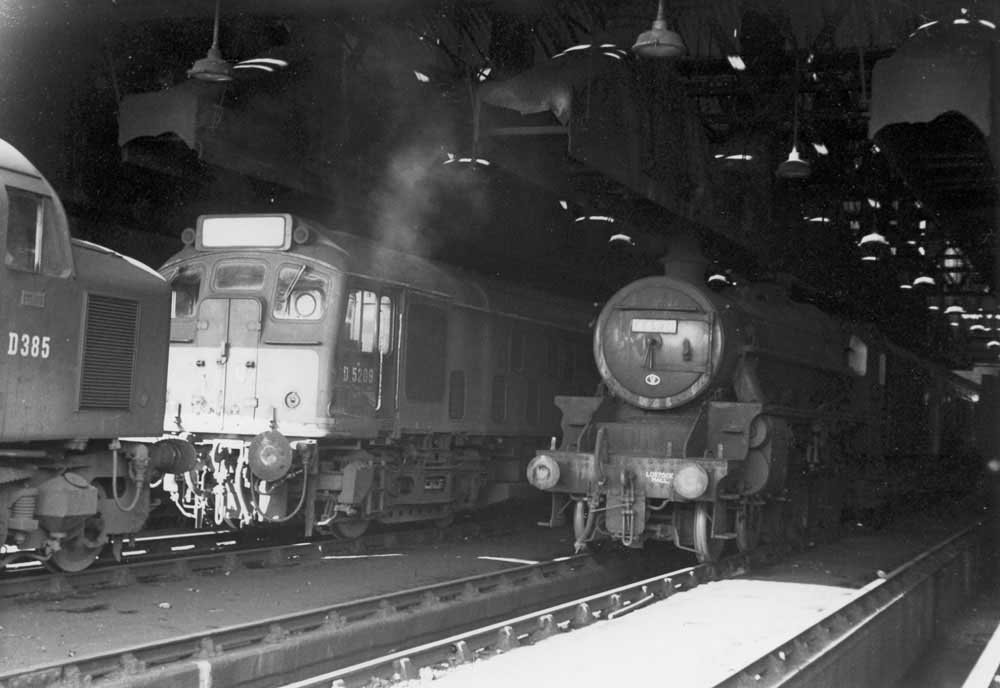
Hest Bank
The West Coast mainline was briefly followed until reaching Hest Bank North Junction where the line swung west to take the short branch to Morecambe. This short piece of the WCML is perhaps the only place where the WCML lives up to its name, that is assuming the tidal flats of Morecambe Bay qualify for an ocean view.
When we used to go to Morecambe via Lancaster (North West), it was necessary to change ends at Lancaster and we would frequently pick up a lot of school kids, who would take the seats nearest the cab knowing that more than likely they would get a free ride to either Bare Lane or Morecambe. To keep the kids guessing occasionally the guard would come out of the driving cab to collect the fares, or at other times from the rear cab, doing whatever to keep the kids on the toes. Another ploy was for the guards to ask us to go slowly after leaving Lancaster in order to get all the tickets checked and fares collected. A couple of miles of this part of the trip were on the WCML which did not make us too popular with any expresses that might have been inconvenienced!
When heading northbound up the WCML to Morecambe, the main line would be left at Morecambe South Junction.
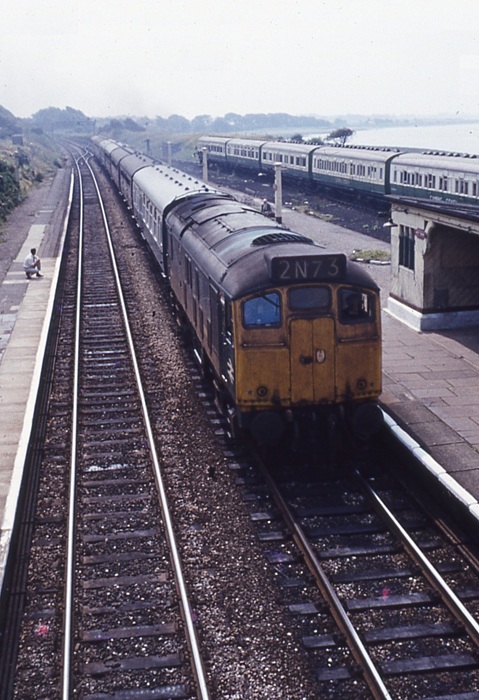
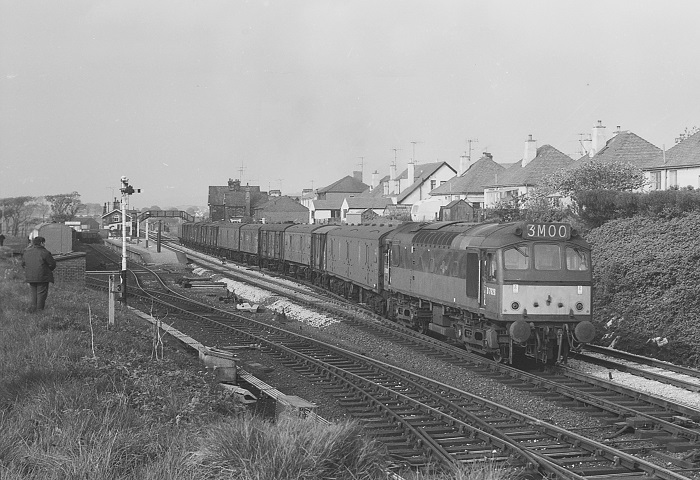
Morecambe
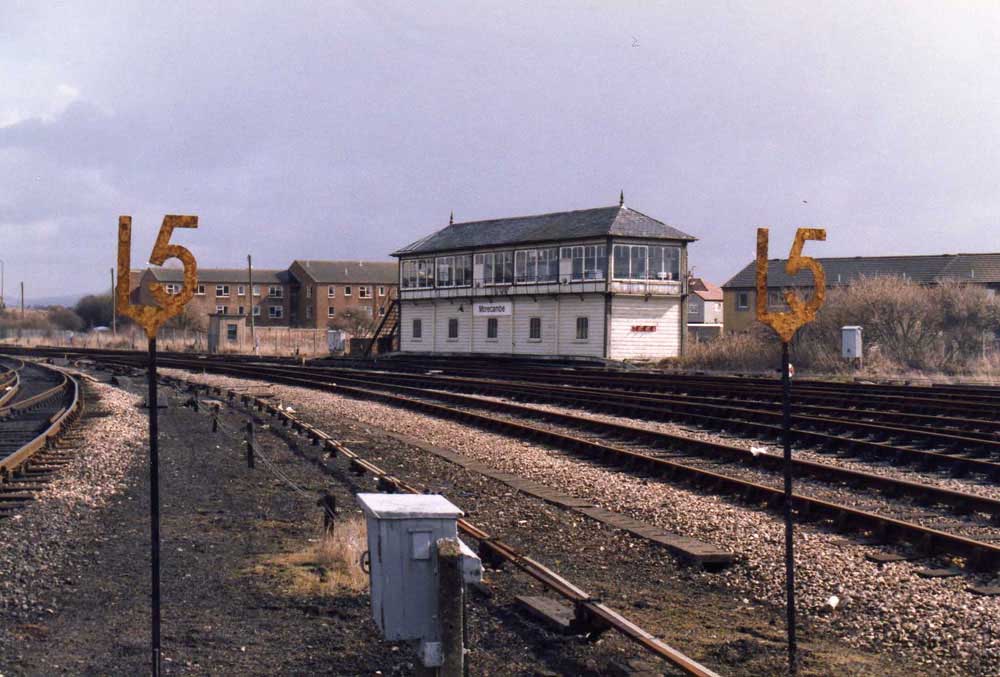
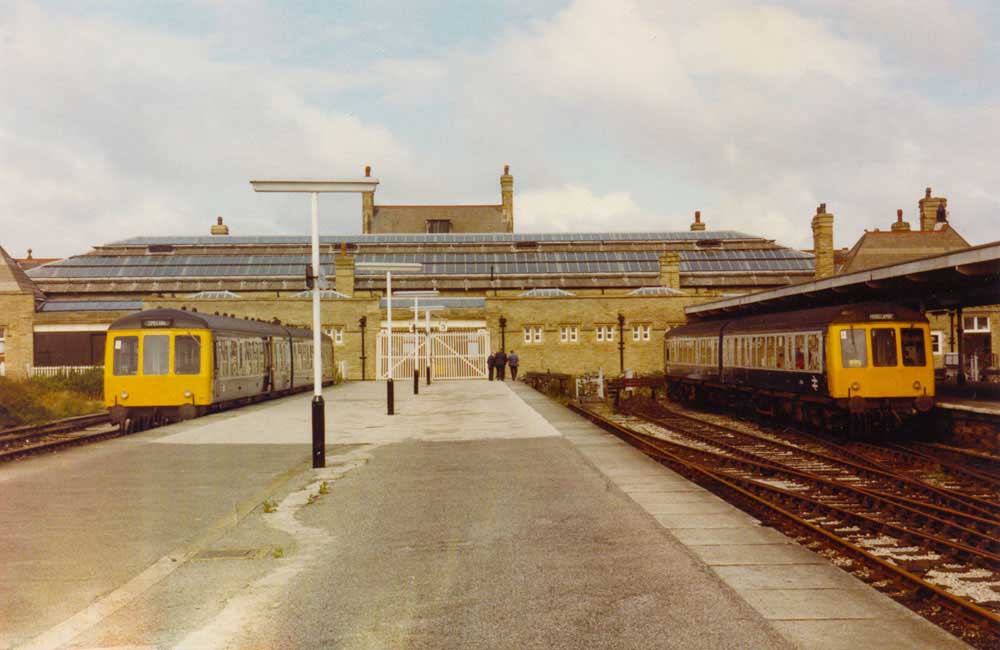
One afternoon whilst awaiting our return back to Leeds with a Class 156 passenger working, my mate turned up with two Class 156's coupled together on a special working. Being your average inquisitive railwayman I wandered over to speak with my mate, on entering the brake compartment there was a bar serving beer! The special had been chartered by the Green Party as a means of promoting the party as election time drew near. I struck up a conversation with one of the people behind the bar, keeping one eye on the beer, when this guy pulled out a pint glass. The glass was of interest as it had a print of Ribblehead Viaduct on it, and pint glass collecting was a bit of a hobby of mine. My request for a glass (empty of course!) was sternly refused unless I chose to join the Green Party. Jokingly I replied that I vote Conservative, hearing this surprise remark my mate moved very quickly to get me off the diesel multiple unit knowing that a pretty good wind up was about to happen!
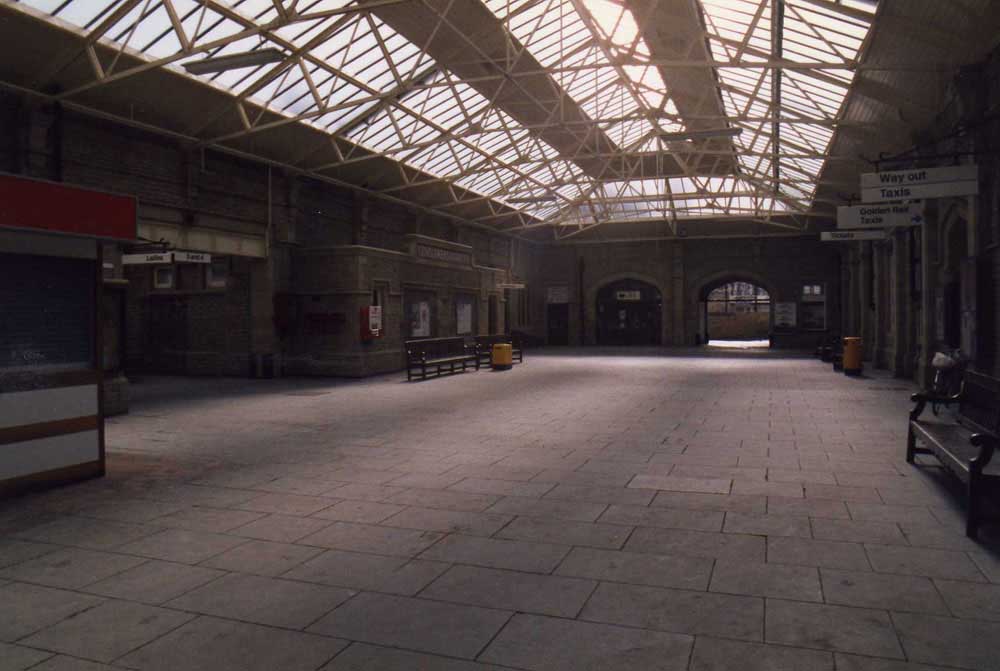
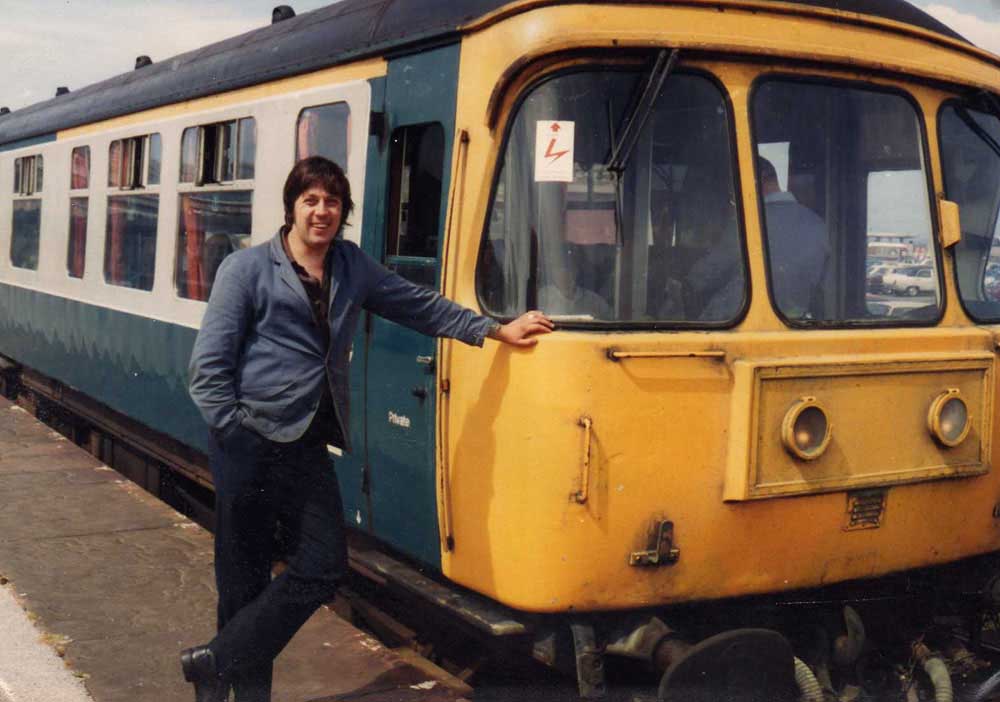
On one job utilising diesel multiple units I was changing ends at Lancaster and noticed a fuel leak to one of the injector pipes. I called Control to have someone look at the problem - they advised me to work forward to Morecambe where a fitter would be waiting. I was somewhat surprised to be told that a fitter would actually be there, but sure enough a few minutes after arrival a fitter showed up and after a short diagnosis it was deemed prudent to isolate the engine until Neville Hill could take a look at it. The fitter was on a twenty four hour call out, and just prior to being contacted by Control he'd been at home decorating! Morecambe was a signing on point until about 1984, the drivers being basically Carnforth men.
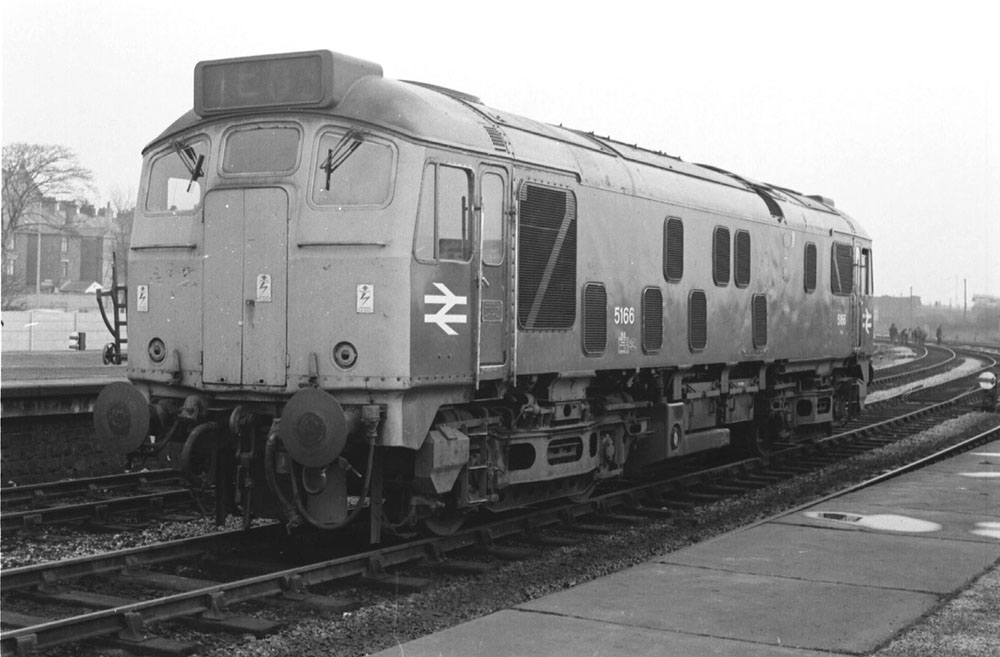
Holbeck also had some spare turn in the links, which could cover the Leeds DMU link. This link included the route Leeds via Carnforth, to Lancaster and then change ends to Morecambe (at the later stages the diagrams were altered to go Morecambe twice, handling a trip Leeds via Carnforth to Lancaster, to Morecambe return to Lancaster and then back to Morecambe, then return to Lancaster and back to Leeds). The Heysham services, which were only in the summer were extended Morecambe services. When the type Classes 25 & 31 began going to Morecambe, the Leeds DMU Link thought it was great, because they would sit spare most of the time. When Bradford Hammerton Street closed, then the Leeds crews learnt the road to Blackpool, which was via Bradford, Hebden Bridge, Copy Pit, Blackburn, Preston and to Blackpool, the Holbeck crews never learnt the route between Preston and Lancaster.
Heysham
Holbeck crews also knew the road from Morecambe down to Heysham. However Michael's visits to Heysham were not that frequent, visiting twice as a secondman way back in 1974/75. We had worked a petrol tank train into Heysham and returned with a parcels job, regrettably our visit was entirely in the dark. We had run round at Morecambe Station and my memories of Heysham were that it was really run down, regrettably a condition found in many other places across the network at this time.
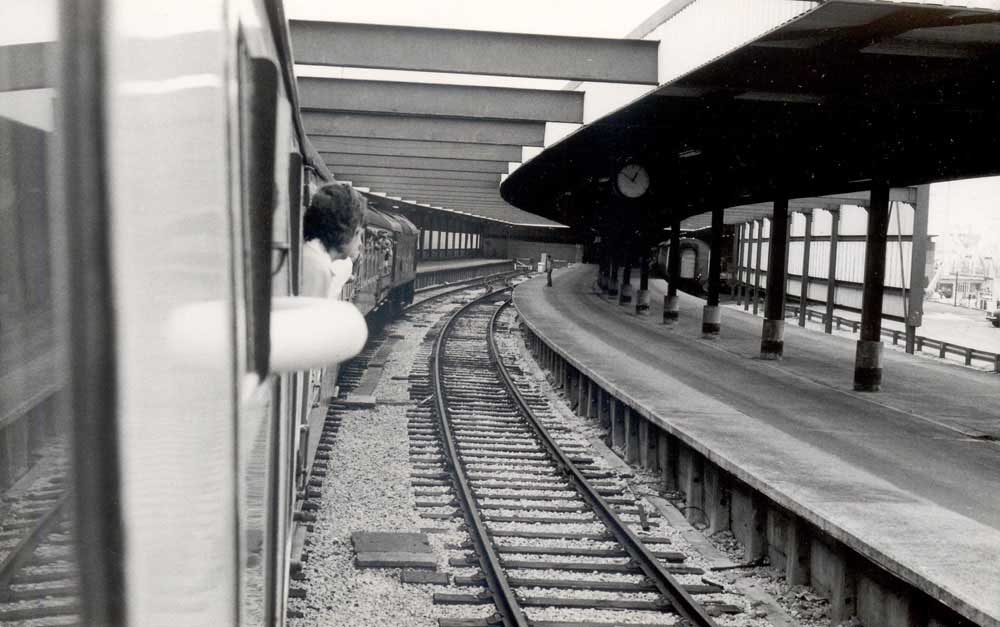
Lancaster
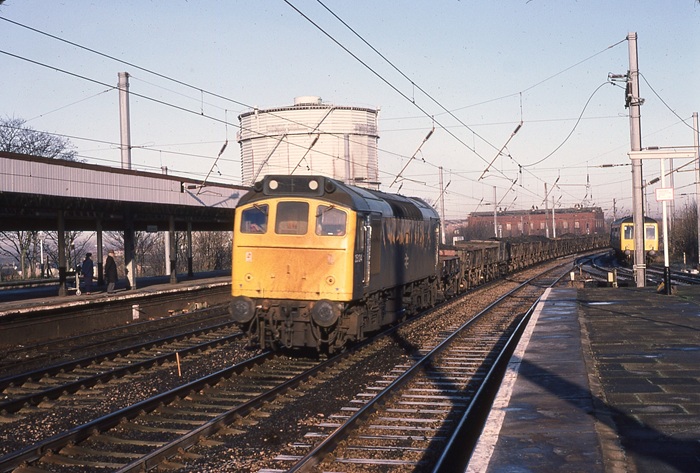
With regard to the above view the multiple unit on the right is most likely a Leeds job, probably a morning job from Leeds to Lancaster, arriving in platform 5 (right of the photograph), a trip to Morecambe followed and then back to Lancaster, again to platform 5, then place the unit in the siding whilst platform 5 was used for other trains. I can remember on platform 5 were a family of ducks and the station staff on a morning would feed them and collect their eggs until the new station manager arrived and had the ducks either moved or destroyed.
Eventually our jobs went into platform 2 (left of the photograph) which was easier because we could get to the messroom inbetween jobs, again it was altered by adding a trip to Morecambe and we could use the messroom there, in the 1980s BR did change this job a few times to try and get as much productivity out of us, on the afternoon job we used platform 2 but to get the Carnforth man home early we did an extra Morecambe job for him (happy days). I can also remember one day being placed into platform 3 for some reason and then the station manager asking if I knew the sidings just beyond platform 3, no problems, so we set off to stable the unit into the sidings and had our ‘grub’ on the unit, on changing ends the APT came through non-stop, cracking sight to watch.
![]()
Page added March 20th 2007.
Last updated January 11th 2025.